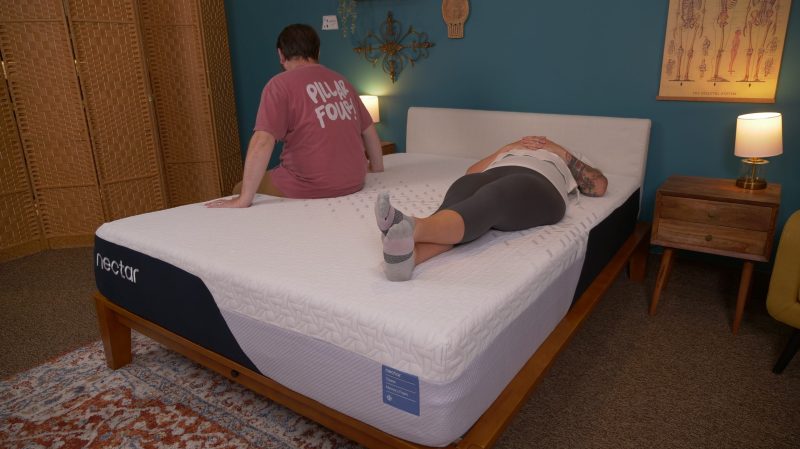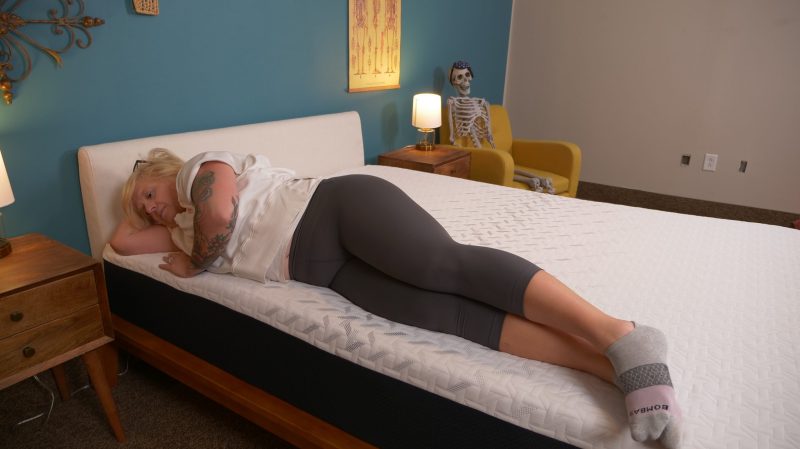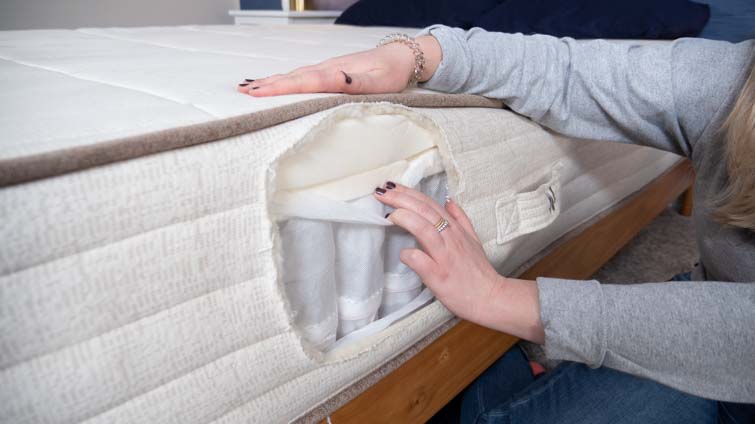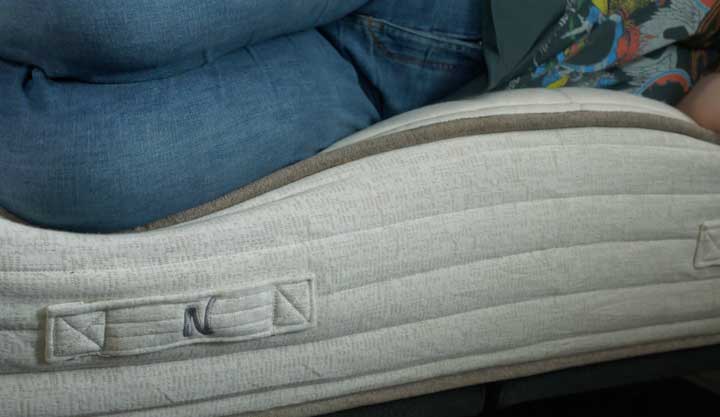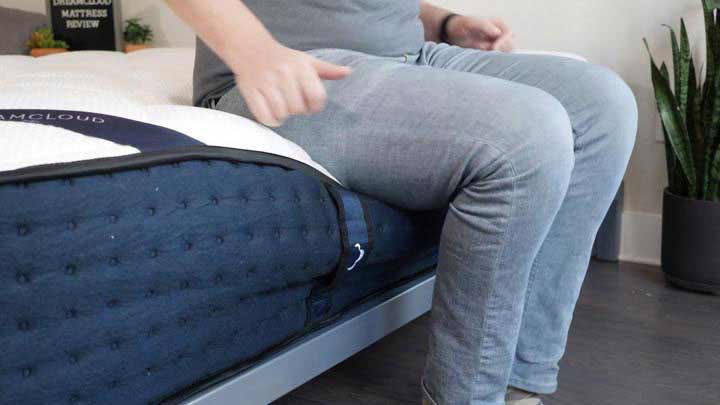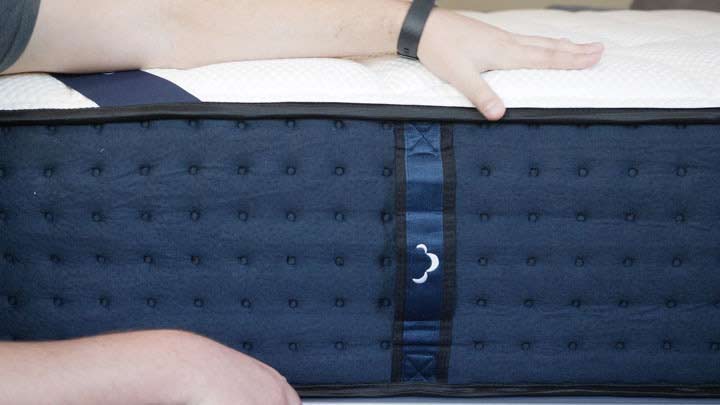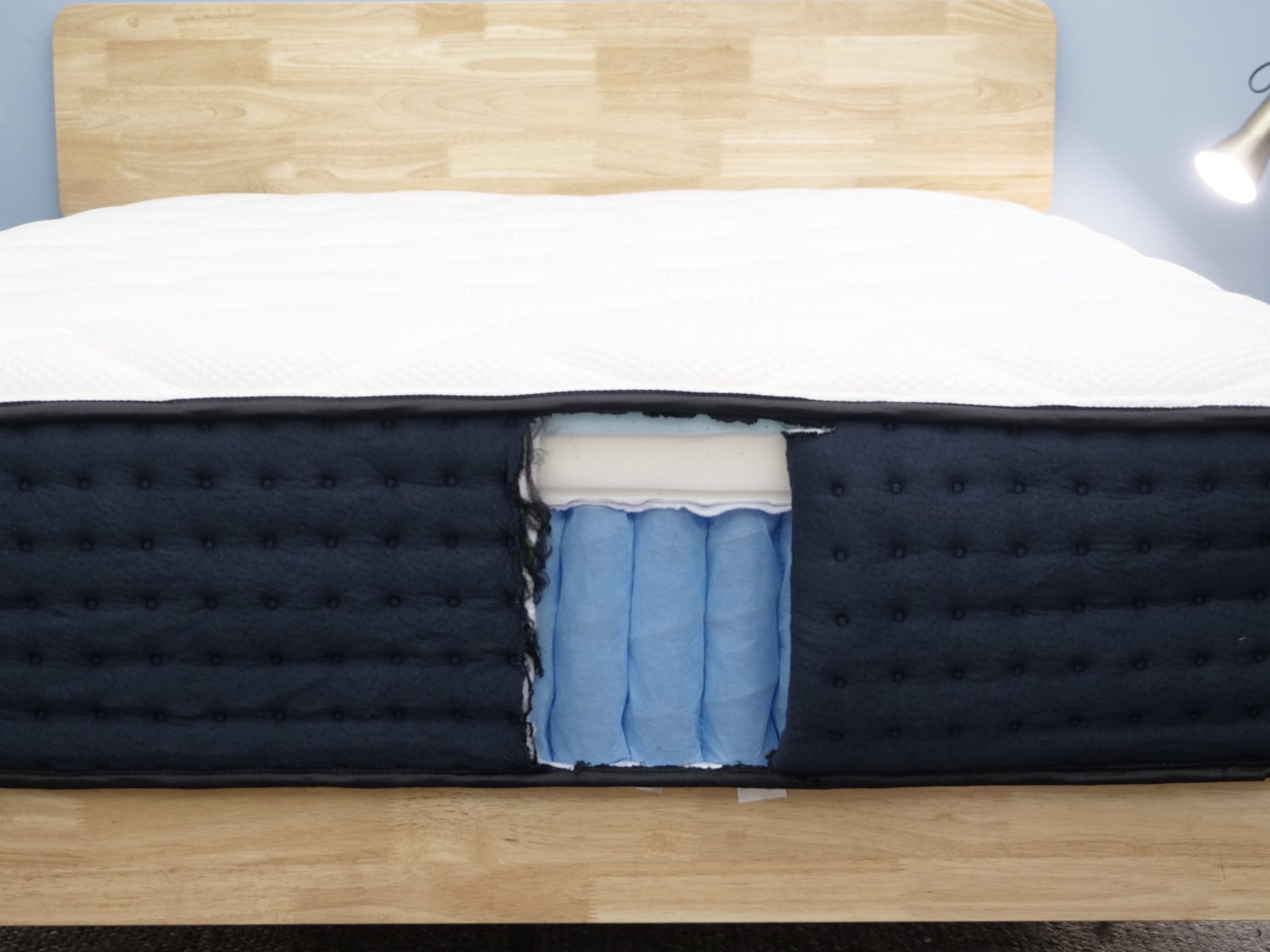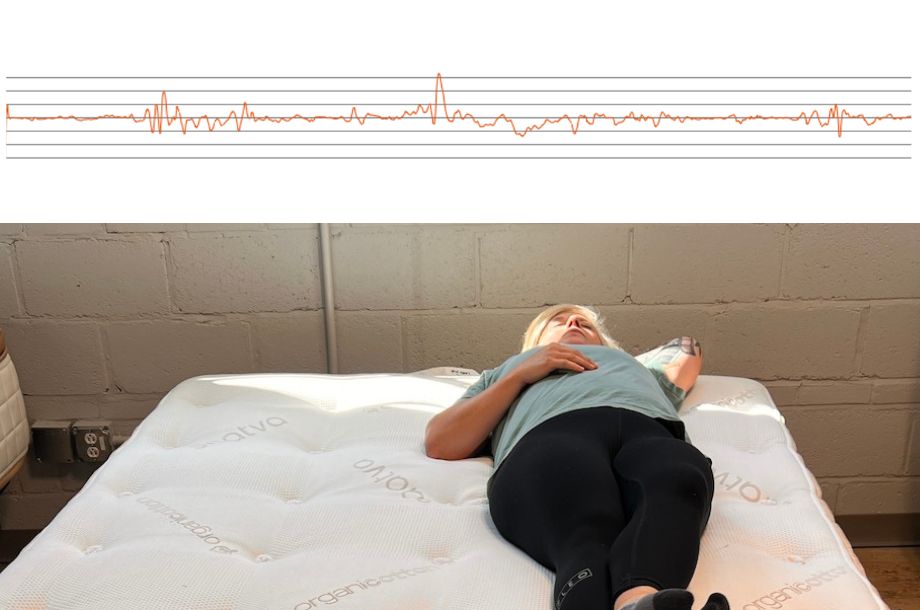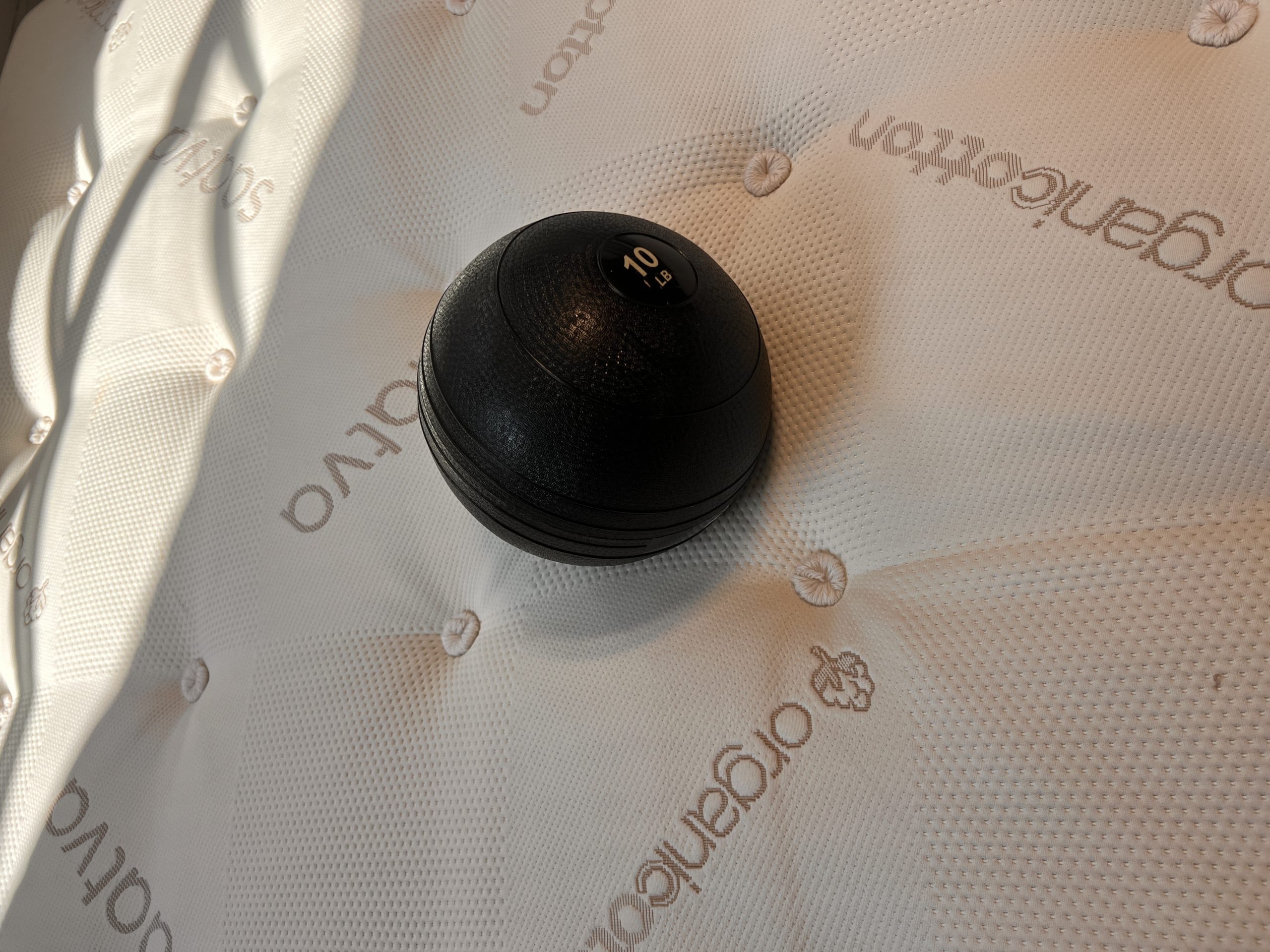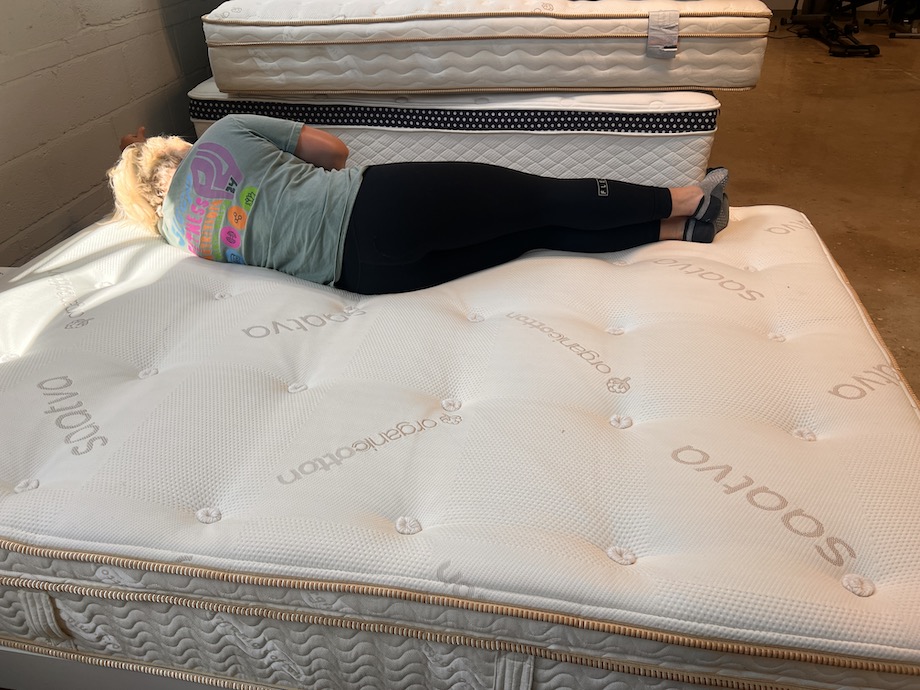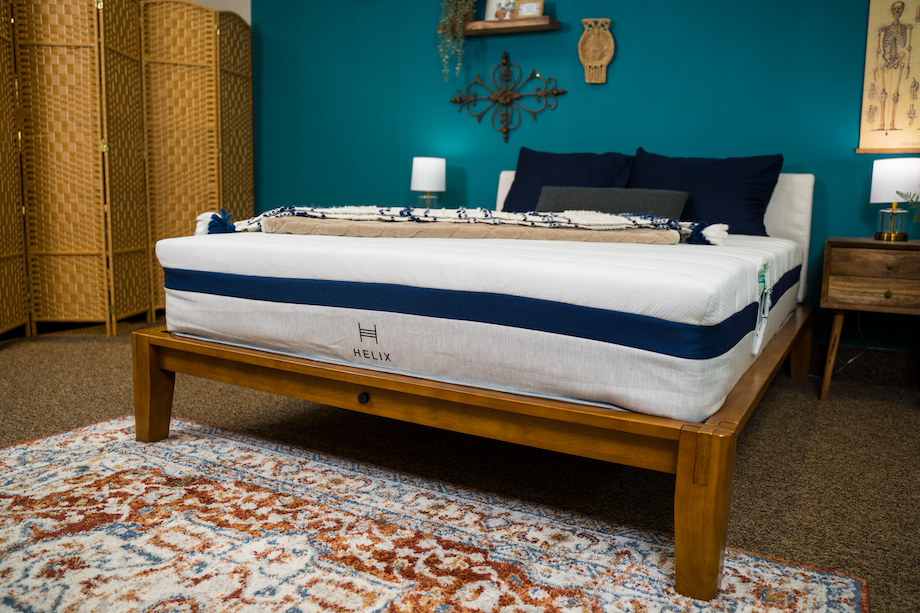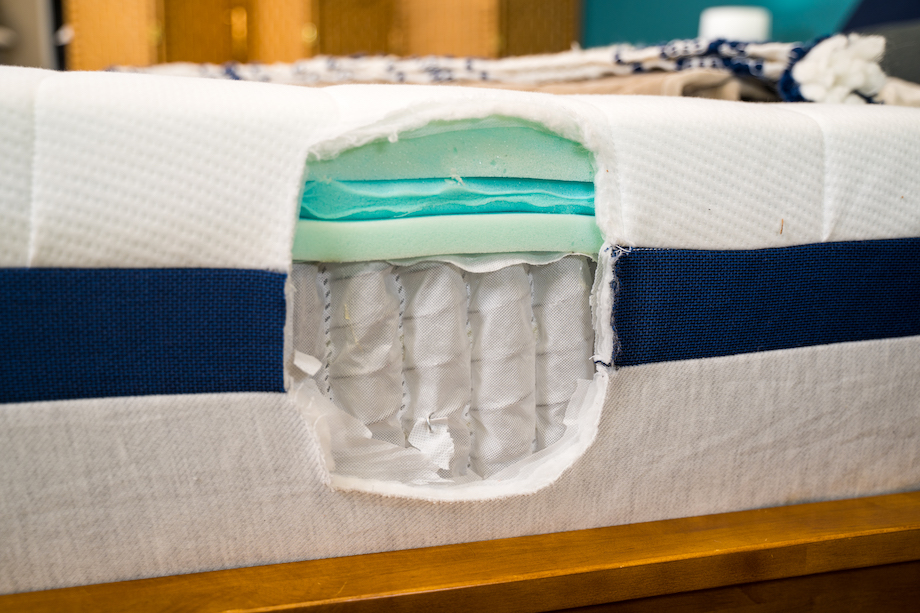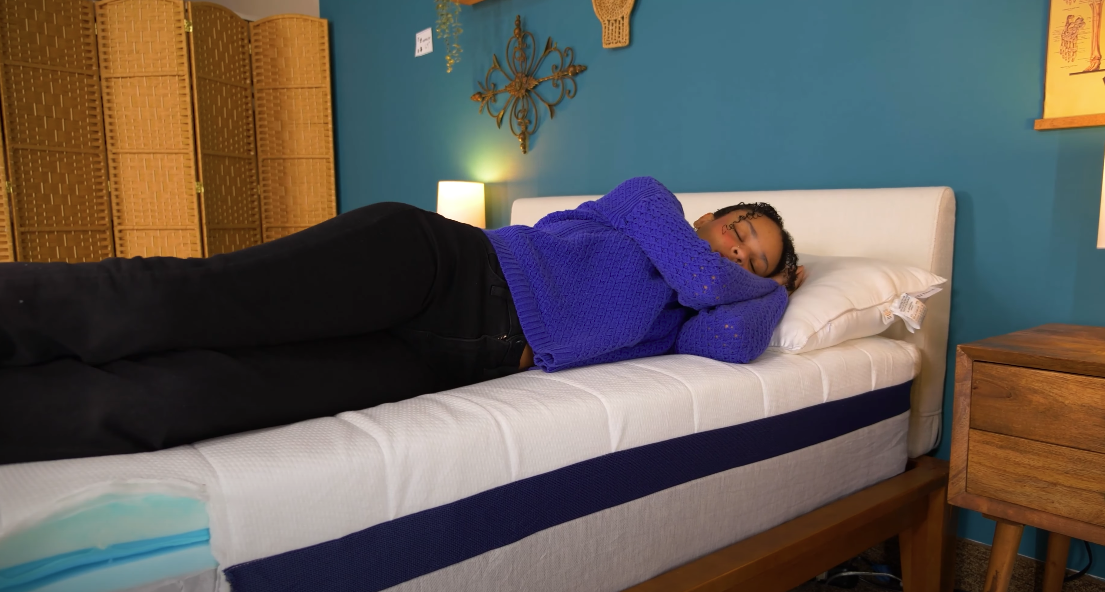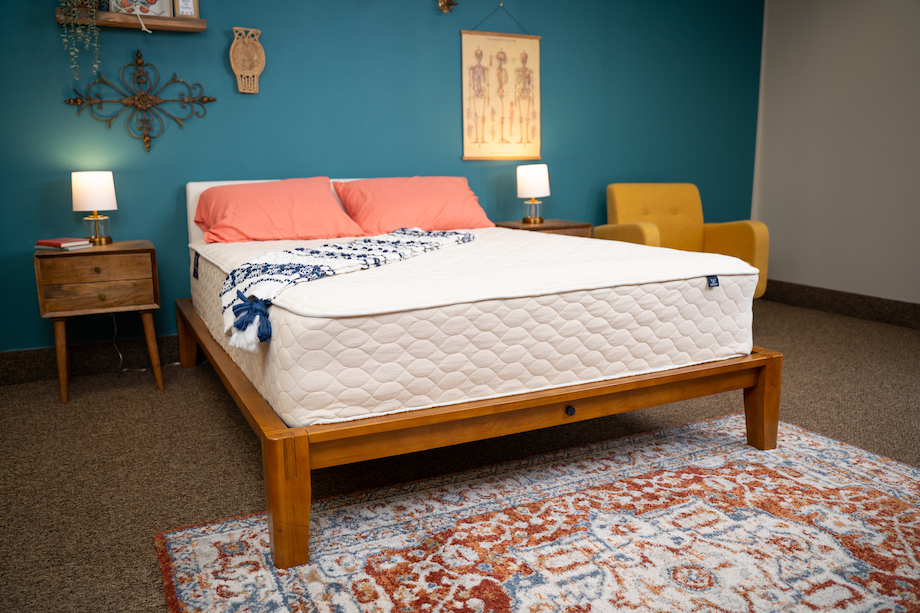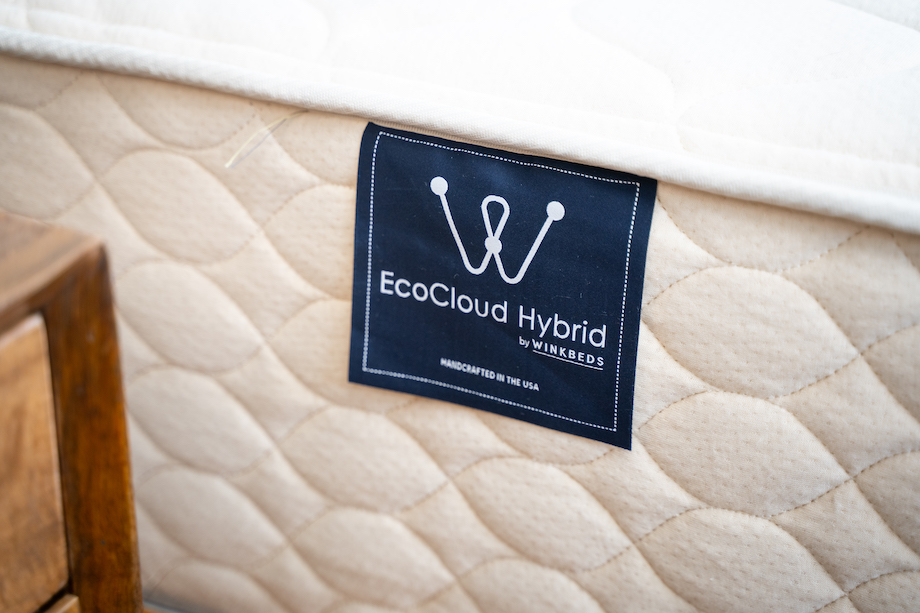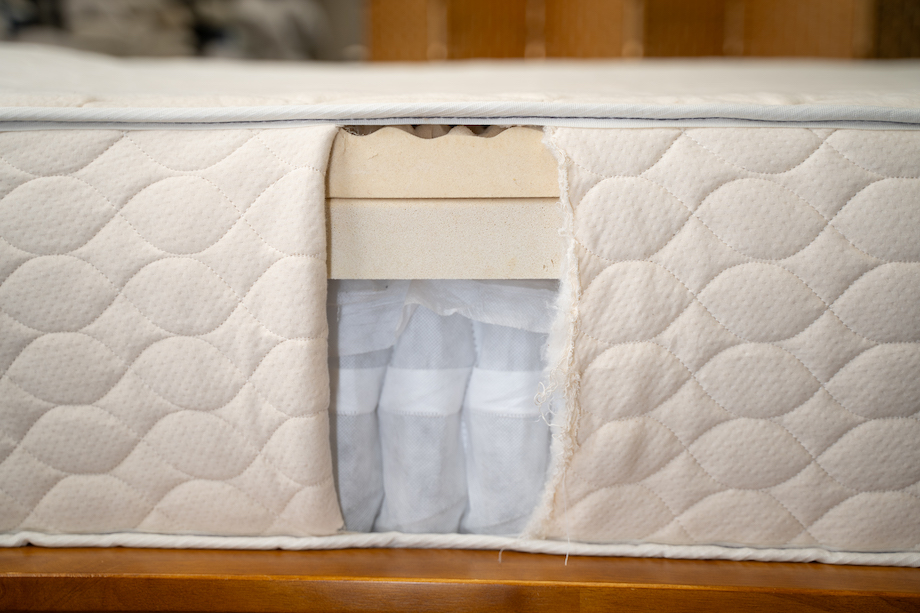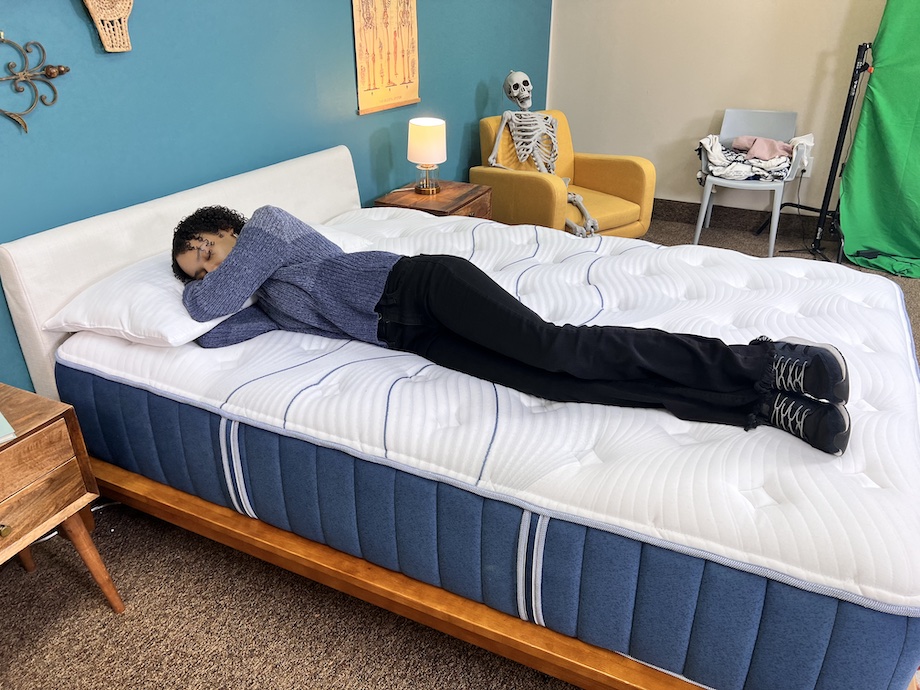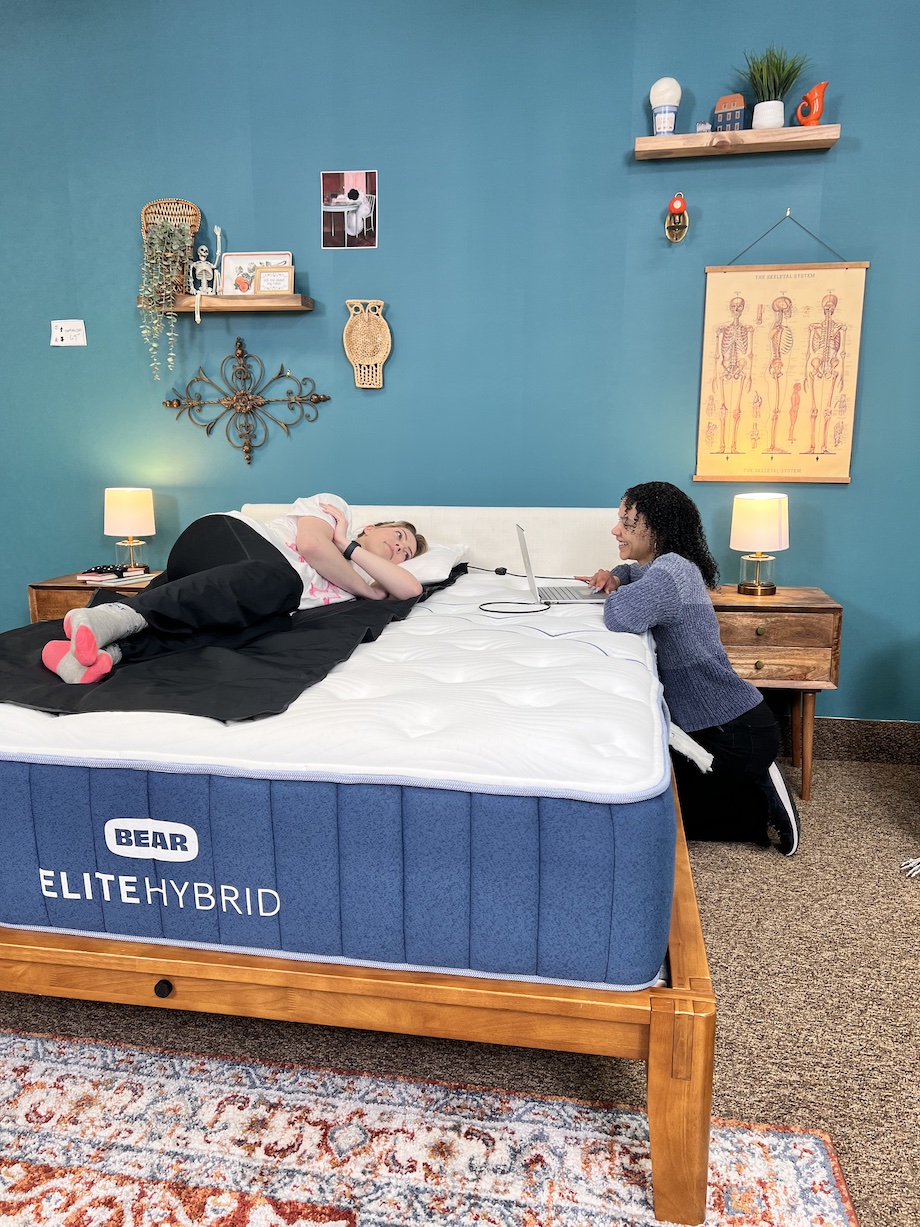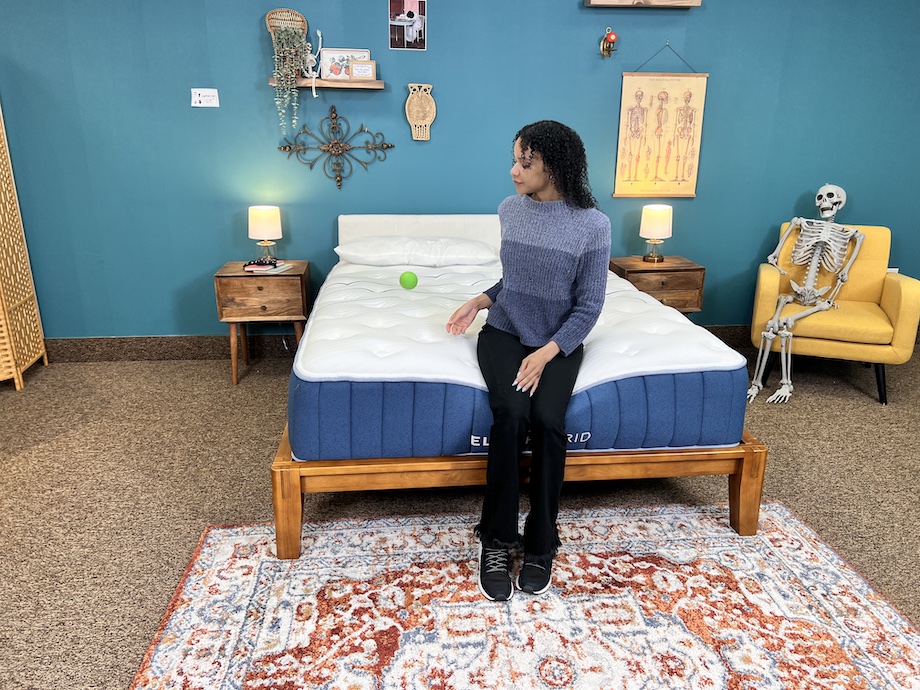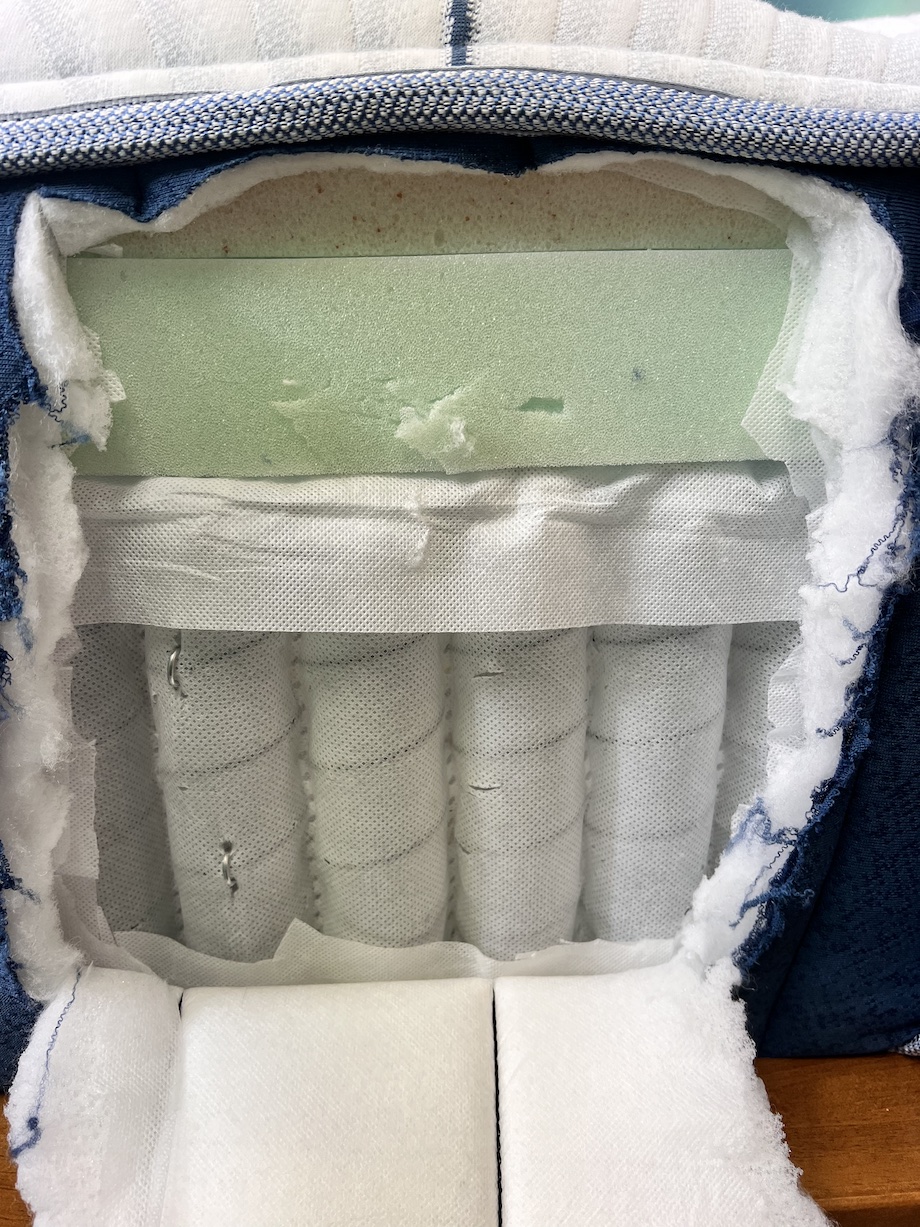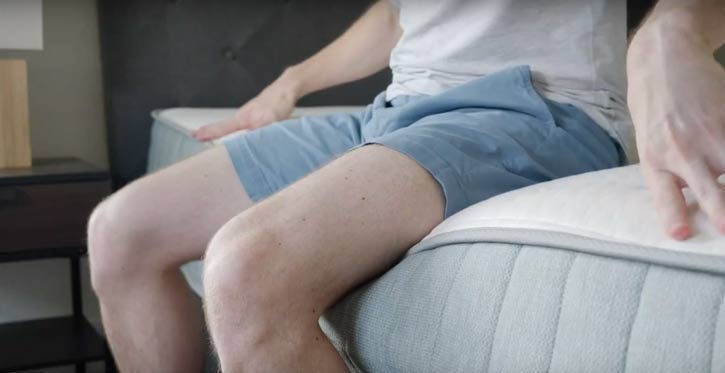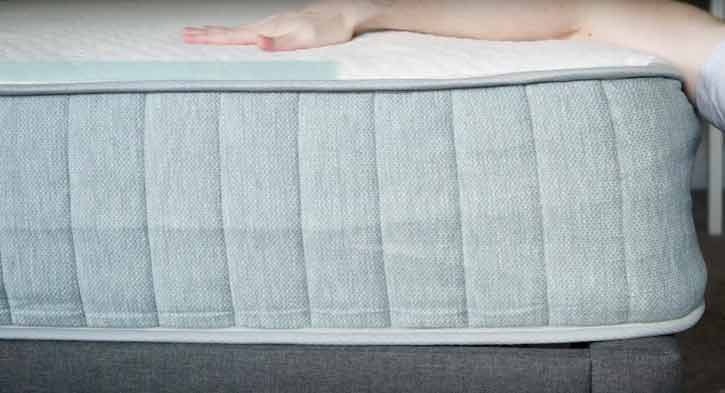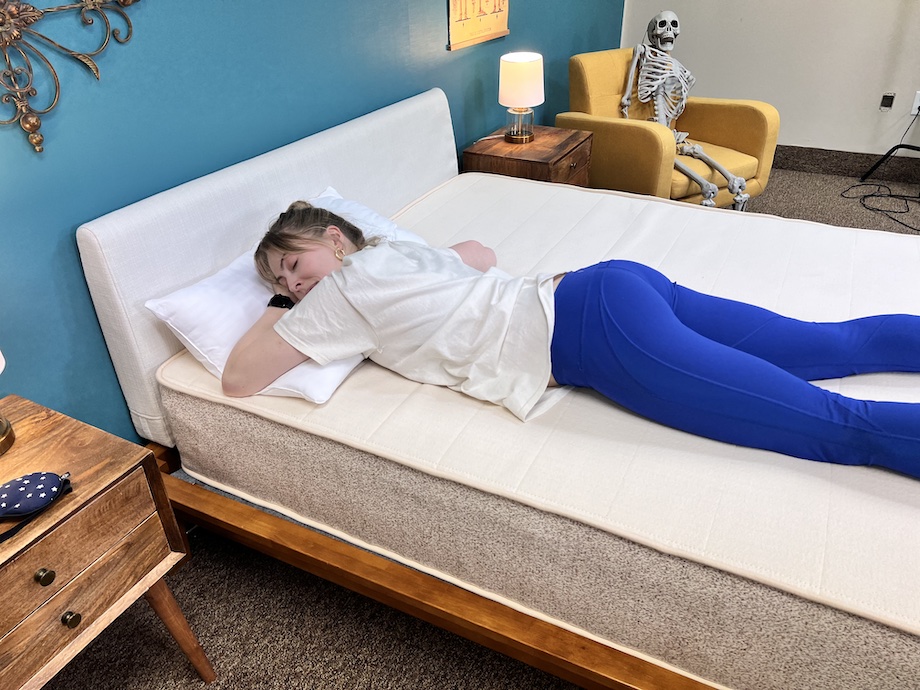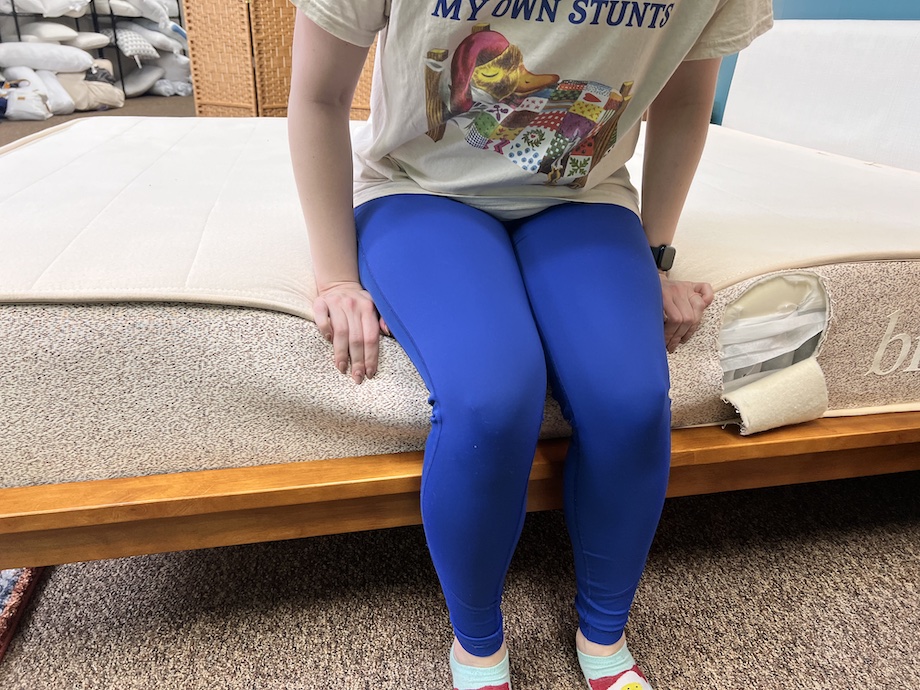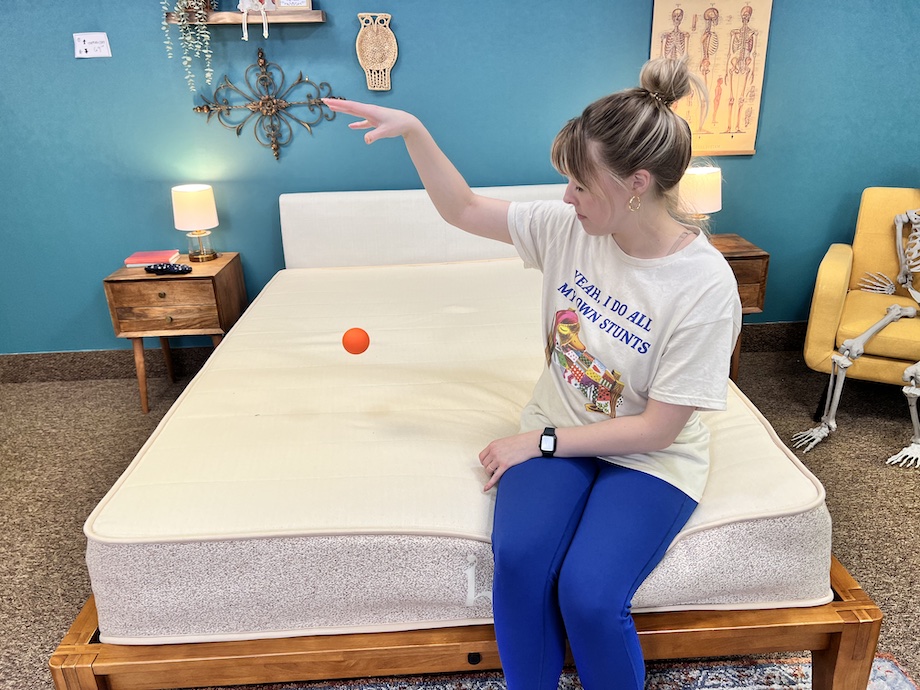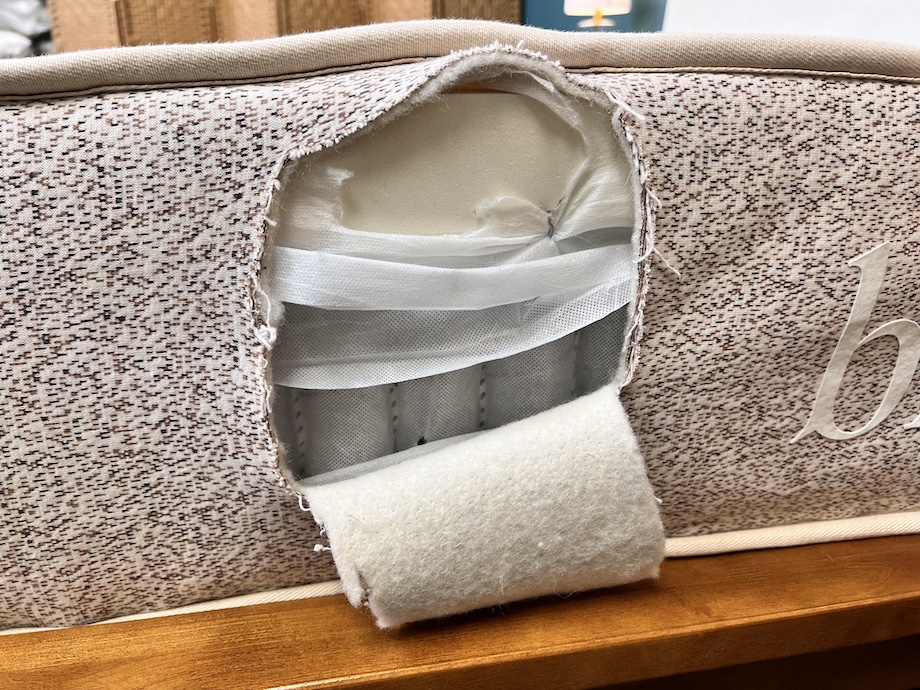If you struggle with allergies or asthma, you probably don’t want your bed to be part of the problem. Allergens and irritants can take up residence in your mattress and contribute to your symptoms, preventing you from getting an uninterrupted sleep.
A good mattress for allergies should include hypoallergenic and dust mite-resistant materials such as latex and memory foam. These materials are also antimicrobial, which means they help prevent the growth of various microorganisms. Some mattresses also use an antimicrobial treatment to add an extra layer of protection.
To help you in your search, we’ve compiled a list of the best mattresses for allergies and asthma, sorted by specific features that should benefit many kinds of sleepers.
Best Mattresses for Allergies
- Nectar – Editor’s Pick
- Nolah Natural – Best Organic Mattress for Allergies
- DreamCloud – Best Mattress for Back Pain and Allergies
- Saatva Latex Hybrid – Best Natural Latex Mattress for Allergies
- Helix Midnight – Best Hybrid Mattress for Allergies
- WinkBeds EcoCloud – Best Mattress for Combination Sleepers with Allergies
- Bear Elite Hybrid – Best Mattress for Athletes with Allergies
- Brooklyn Bedding EcoSleep – Best Affordable Mattress for Allergies
- Birch Natural – Best Mattress for Stomach Sleepers with Allergies
Our Best Hypoallergenic Mattress Video Review

Compare The Best Mattresses For Allergies
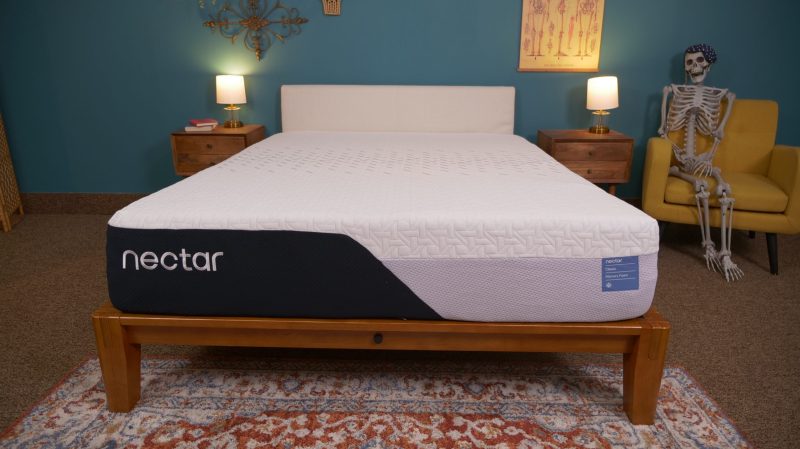
|
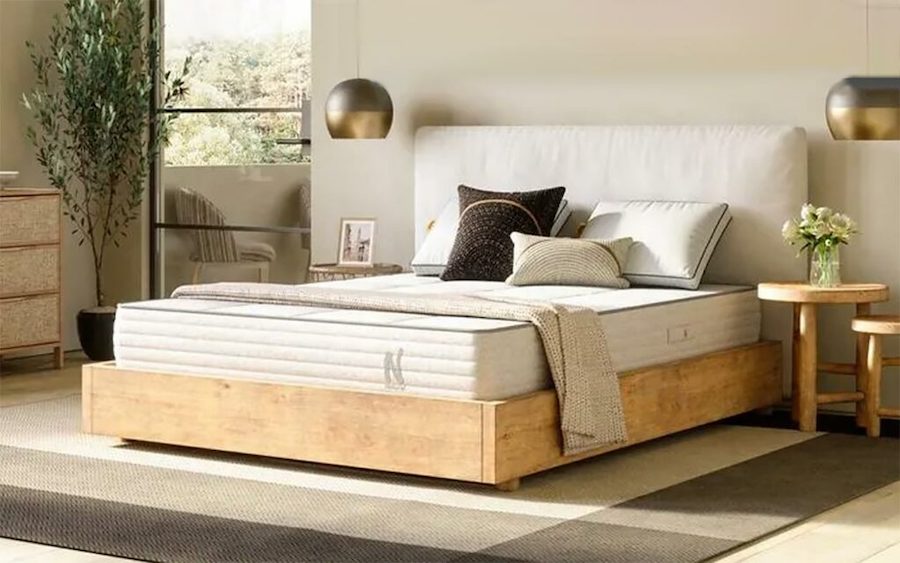
|
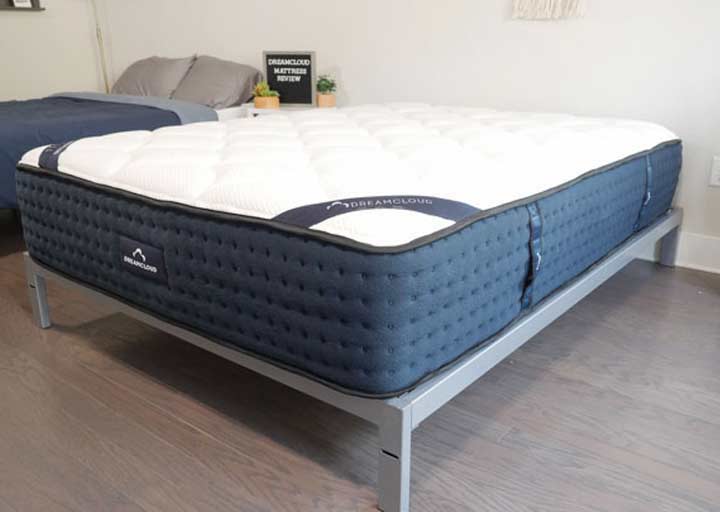
|
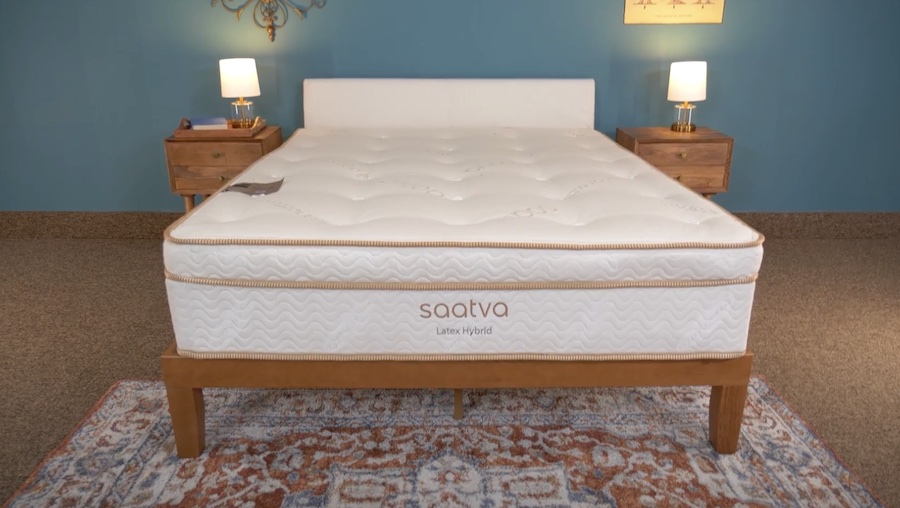
|
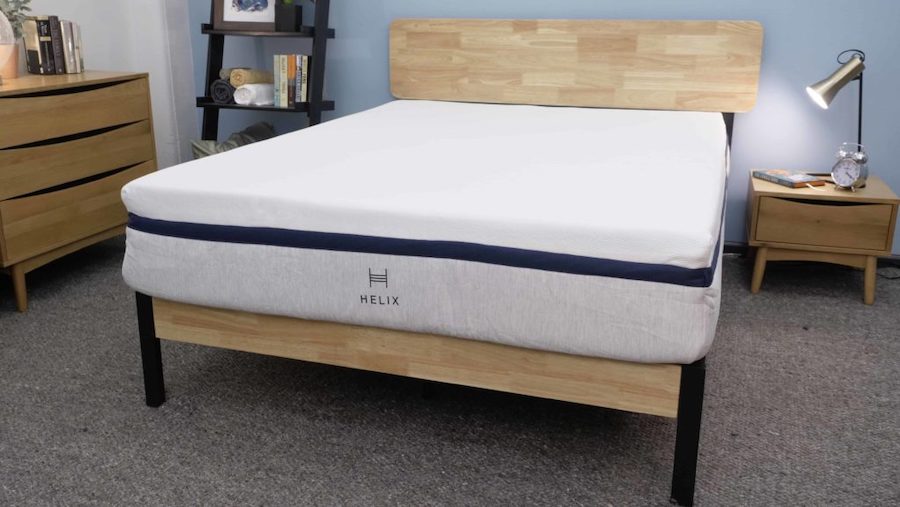
|
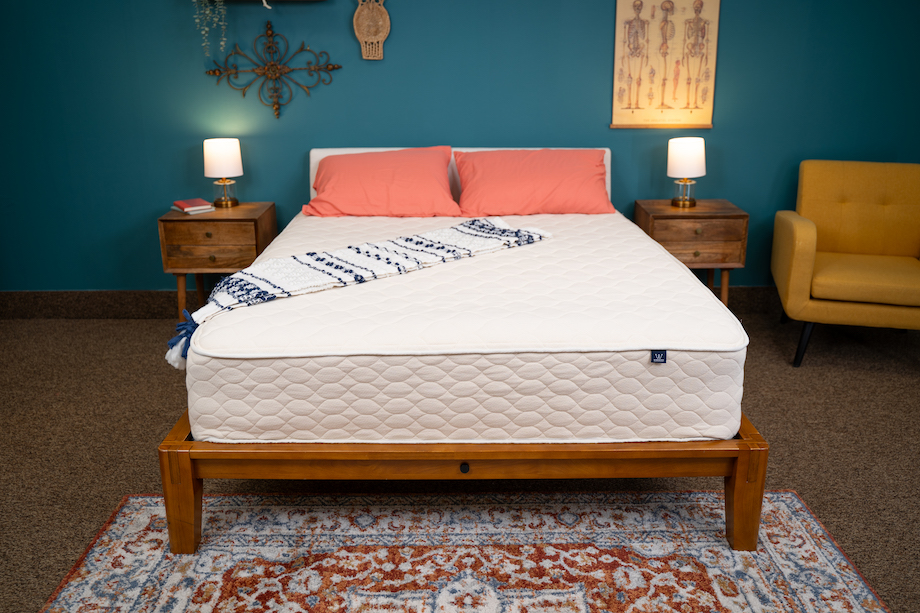
|
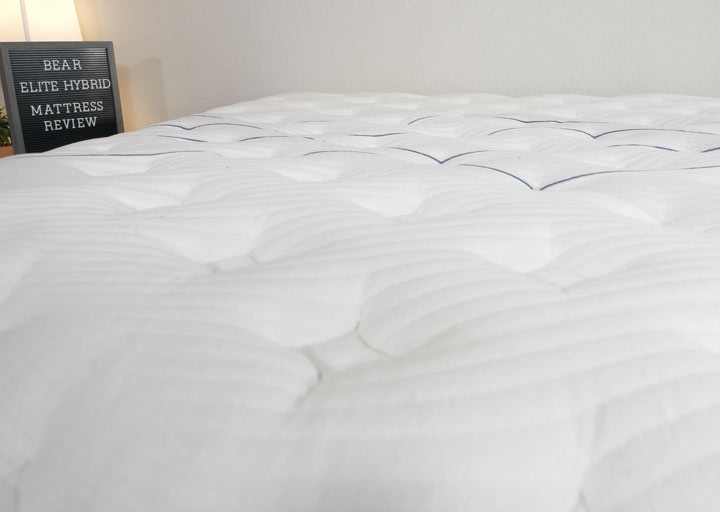
|
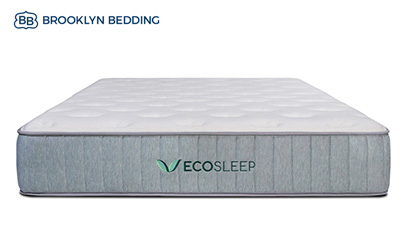
|
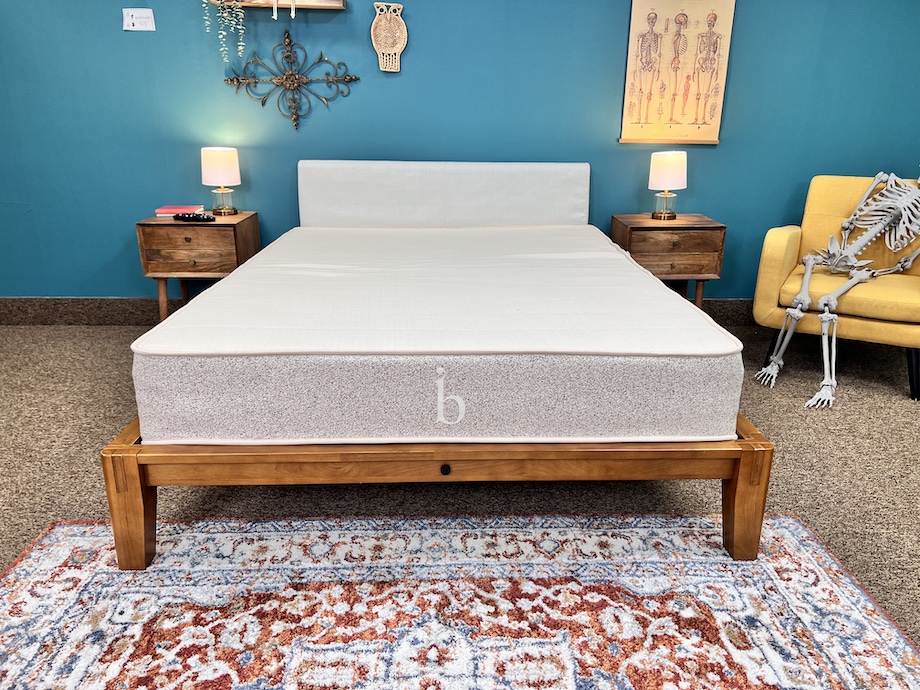
|
|
| Nectar Mattress | Nolah Natural Mattress | DreamCloud Original Mattress | Saatva Latex Hybrid Mattress | Helix Midnight Mattress | WinkBeds EcoCloud Mattress | Bear Elite Hybrid Mattress | Brooklyn Bedding EcoSleep | Birch Natural Mattress | |
| Rating | |||||||||
| Firmness | Firm: 7.5/10 | Medium-firm: 6/10 | Medium-firm: 6.5/10 | Firm: 7/10 | Medium-firm: 6/10 | Medium: 5.5/10 | Medium-firm: 6/10 | Multiple firmness options | Medium-firm: 6/10 |
| Material | Foam | Latex | Hybrid | Latex | Hybrid | Latex | Hybrid | Latex | Hybrid |
| Cooling | — | — | — | ||||||
| Warranty | Lifetime warranty | Lifetime warranty | Lifetime warranty | Lifetime warranty | 10-year warranty | Lifetime warranty | Lifetime Warranty | 10-year warranty | 25-year warranty |
| Shipping | Free shipping | Free shipping | Free shipping | Free white glove delivery | Free shipping | Free shipping | Free shipping | Free shipping minus HI and AK | Free shipping |
| Trial Period | 365 nights | 120 Nights | 365 nights | 365 nights | 100 nights | 120 nights | 120 nights | 120 nights | 100 nights |
| Best For | Back Sleepers, Back Pain, Stomach Sleepers, Side Sleepers, Couples | Side Sleepers, Back Sleepers, Stomach Sleepers, Hot Sleepers, Back Pain | Back Sleepers, Hot Sleepers, Seniors | Stomach Sleepers, Back Sleepers, Back Pain, Hot Sleepers | Couples, Back Sleepers, Side Sleepers | Back Sleepers, Side Sleepers | Back Sleepers, Stomach Sleepers, Hot Sleepers, Hip Pain, Seniors | Back Sleepers, Stomach Sleepers, Hot Sleepers | Back Sleepers, Stomach Sleepers, Hot Sleepers, Seniors |
How We Test the Best Mattresses for Allergies
At Sleep Advisor, our mattress reviews are based on findings from in-person tests that allow us to have a genuine understanding of how the mattress feels and performs. Our diverse cast of testers evaluate the bed in all sleeping positions and for all body types, so you can expect a totally holistic and considerate overview of a bed’s performance. We’ll judge things like bounce and support, but also other perks like cooling.
We then take all the information we’ve gathered to rate this beds in layman’s’ terms. This way, you can do your own easy research to find our whether a bed is best for you.
For this roundup, we prioritized features that are especially important for people with allergies. We also sought the expertise of our Chief Medical Advisor, Dr. Raj Dasgupta.
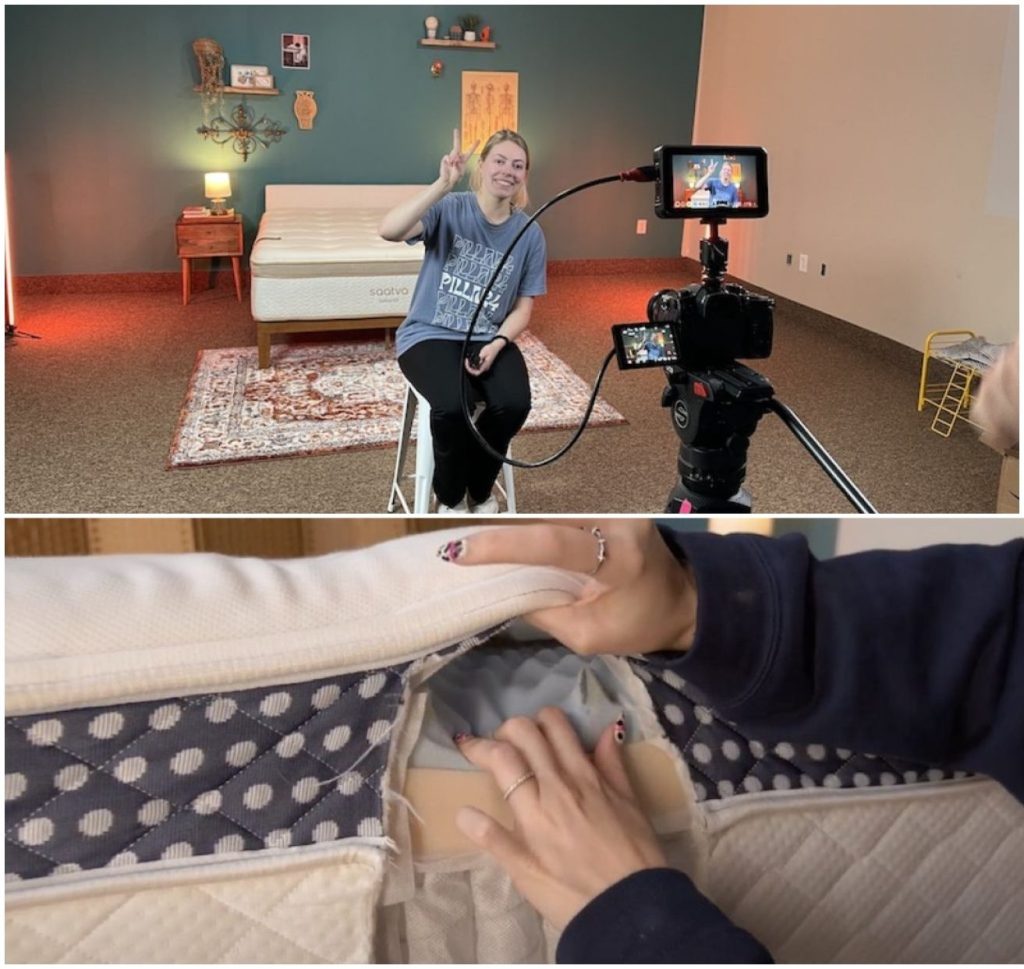
What We Look for in a Hypoallergenic Mattress for Allergies
Hypoallergenic Materials
It sounds like a given, but you’d be surprised at how many mattresses can be the cause of allergies acting up. We searched for beds that feature components like organic cotton covers or other antimicrobial treatments to keep dust mites, mold, and other allergens from building up on your bed’s surface. Bonus points for mattresses that used hypoallergenic materials in their internal construction!
Breathable Construction
If your mattress is holding onto dust and dirt, there’s a chance it can exacerbate your allergies. So, we looked at beds that keep air flowing through the mattress. Usually this is done with coils or open-celled foams.
Best Beds for Allergies & Asthma
Nectar – Editor’s Pick
The Advisor Says: We believe that Nectar offers a quality bed backed up by generous policies, and for under $1,000 for a queen (after discounts). If you’re looking for a firmer foam mattress on a budget, the Nectar Classic has you covered.
Why the Nectar Earned Editor’s Pick
Nectar’s balance of plush comfort and firm support make it well-suited to back and side sleepers especially, and its hypoallergenic touches accommodate those with allergies and asthma.
Its foams are CertiPUR-US® certified, meaning they meet high safety standards for their composition and emissions. They’re also naturally resistant to dust mites. Couple these factors with the bed’s affordable price, and you can see why it tops the list.
What’s the Nectar Made Of?
The Nectar mattress is 12 inches tall and made up of five layers (if you include its two covers). The top cover is made with a poly-blend material that also features cooling capabilities, thanks to its moisture-wicking polyethylene microfibers.
Three CertiPUR-US® certified foam layers make up the bulk of the mattress. The first is a 1-inch memory foam layer designed to provide pressure relief. Next is a 3-inch layer of a more responsive foam that also promotes alignment. Finally, the base of the mattress is made up of 8 inches of thick foam to give the bed its stability.
The lower cover was engineered to keep your mattress and all its layers in place.
My Take: Memory foam is naturally hypoallergenic, so the Nectar has you covered in that department—but more than that, this bed is overall just a bang for your buck. You’d be hard-pressed to find another mattress of this quality under $1,000.
Customer Reviews of the Nectar mattress
With thousands of reviews on Nectar’s website, the Nectar mattress has an average 4.8 out of 5 stars. One common customer complaint about the Nectar mattress is its longer-than-average break-in period, while many customers praise its excellent value and comfort once fully settled.
Want to read more? See our complete Nectar mattress review.
Nolah Natural – Best Organic Mattress for Allergies
The Advisor Says: If you’re looking for a luxurious latex bed, you’ve found it in the Nolah Natural. This mattress features quality organic materials and has a well-rounded feel, earning high marks in support, pressure relief, and cooling.
Why the Nolah Natural Earned Best Organic Mattress for Allergies
The Nolah Natural features an organic cotton cover, layers of GOTS-certified organic wool, and hypoallergenic natural Talalay latex. This combination of materials makes the mattress especially suitable for allergy-prone sleepers.
This hybrid bed also comes with multiple certifications that attest to its quality, durability, and eco-friendliness.
What’s the Nolah Natural Made Of?
The Nolah Natural stands 11 inches tall and has a total of six layers. The construction of the mattress starts with a cotton cover, followed by a layer of organic wool—a natural fire barrier. Both organic materials help with cooling and breathability.
Next are two layers of Talalay latex for added comfort and support. The coils in the innerspring unit beneath are individually wrapped and zoned into three areas, thereby providing the right amount of cushioning or pushback for different regions of the body.
The bottom of the bed is as earth-friendly as the top: it features an additional layer of organic cotton and wool beneath the coil unit, and an organic cotton cover with handles.
Our Take: Organic mattresses tend to naturally be hypoallergenic, but the Nolah Natural offers more than just that. With an enviable feel and breathable components, it’s a solid choice for the eco-conscious.
Customer Reviews of the Nolah Natural
On Nolah’s website, the Nolah Natural gets a 4.8 out of 5 stars. Customers appreciate the Nolah Natural mattress for its eco-friendly materials and pressure relief, but some have reported a minimal initial off-gassing odor upon setup.
Interested in learning more? Check out our Nolah Natural mattress review or explore our picks for the best organic mattresses.
DreamCloud – Best Mattress for Back Pain and Allergies
The Advisor Says: The DreamCloud is a pleasantly supportive hybrid that really appealed to the stomach sleepers on our testing team (though it proved itself capable of aligning spines in every position). Its affordable price and couple-friendly features have made it a mainstay of the bed-in-a-box scene.
Why the DreamCloud Earned Best Mattress for Back Pain and Allergies
The best beds for back pain offer a balance of softness and support, and the DreamCloud mattress delivers in both departments. This hybrid has a lifted feel on its surface that should help coax your spine into the proper alignment, mitigating the possibility of pain and hopefully alleviating any existing pain.
More than that, this bed features a hypoallergenic construction that should have sleepers with allergies resting easy—all the way from its luxurious cashmere blend top to its sturdy steel coil unit on bottom.
What’s the DreamCloud Mattress Made Of?
The DreamCloud is 12 inches tall and has six layers sandwiched between its top and bottom covers. The upper cover is made with a cashmere blend that feels extremely soft and luxurious.
Underneath are the first two comfort layers, which are two layers of quilted foam designed to cushion and support you. Next is a 1-inch layer of gel-infused memory foam, which focuses on conforming to your body and relieving pressure. It’s followed by a layer of transitional foam with a firmer feel, intended to support and align your spine.
After that, you’ll reach the innerspring unit. These coils are individually wrapped and slightly thicker around the edges of the bed. They’re held in place by a base layer of dense foam.
My Take: The materials all do a pretty good job of absorbing the feeling of motion, and responding quickly to movement on the top of the bed. Couples, combo sleepers, you’re all set with this mattress.
Customer Reviews of the DreamCloud
The DreamCloud Original scores a solid 4.6 out of 5 stars among customers on its site. While some customers appreciate the value and affordability of the DreamCloud Original mattress, others find it to be on the heavier side, which could make moving or rotating the mattress more challenging.
Want to learn more? Read our full DreamCloud review or check out the best mattresses for back pain.
Saatva Latex Hybrid – Best Natural Latex Mattress for Allergies
The Advisor Says: Looking for a bouncy hybrid mattress constructed with eco-friendly materials? We recommend Saatva’s Latex Hybrid; this mattress scored high in most of our performance categories, and its firmer, buoyant feel should appeal to shoppers wanting super support.
Why the Saatva Latex Hybrid Earned Best Natural Latex Mattress for Allergies
Latex is one of the best materials for a hypoallergenic bed since it naturally deters the buildup of common allergens like dust, pet dander, and mold. And if you’re someone who prefers a naturally constructed mattress, the Saatva Latex Hybrid is for you.
This bed features a layer of natural Talalay latex for pressure relief. The latex is zoned for support, but also provides plenty of bounce and cooling, an added bonus.
What’s the Saatva Latex Hybrid Made Of?
The Saatva Latex Hybrid is 12 inches thick with a total of five layers. First up the cushioning Euro top, covered in an organic cotton cover that also features an antimicrobial treatment.
A layer of organic New Zealand wool regulates temperature while acting as a natural fire barrier. Underneath is the layer of natural Talalay latex, which has five zones to provide enhanced pressure relief and support. This support is only bolstered by the coil unit underneath, which features pocketed springs (that are also zoned for proper alignment).
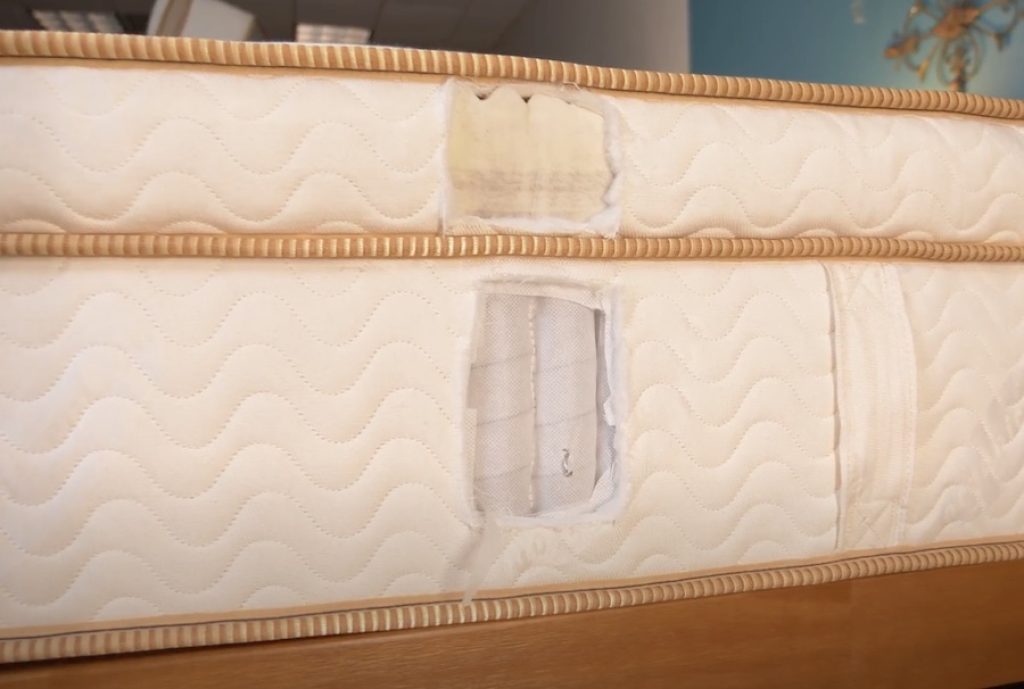
Everything sits on top of a sturdy, eco-friendly foundation made of organic cotton and wool.
My Take: The Saatva Latex Hybrid uses Talalay latex, which has a slightly softer feel to it than Dunlop, but does not sacrifice any of the bounce. It’s only furthered by the pocket coil layer. The springback on this bed’s surface is almost immediate.
Customer Reviews of the Saatva Latex Hybrid
On Saatva’s website, their Latex Hybrid scores a 4.8 out of 5 stars. Customers appreciate the Saatva Latex Hybrid mattress for its eco-friendly and durable materials but have reported that it is relatively expensive compared to some other latex mattresses.
Still curious? Read our full Saatva Latex Hybrid review or check out our other picks for the best latex mattresses.
Helix Midnight – Best Hybrid Mattress for Allergies
The Advisor Says: The Midnight has one of the most impressive score spreads of all the mattresses we’ve reviewed. The best word to describe it is “balanced”: it’s got pressure relief, support, and cooling power in spades, plus a versatile medium-firm feel that tends to satisfy lots of sleepers.
Why the Helix Midnight Earned Best Hybrid Mattress for Allergies
The Helix Midnight is a hybrid mattress, combining cushioning memory foam and sturdy, supportive coils for a well-balanced feel. On top of all of this lies a hypoallergenic cover, and for the Helix Midnight, you can choose between two allergen-resistant options: the standard cover or the GlacioTex™ Cooling Cover.
With its versatile feel, this bed is a great option for lightweight stomach sleepers, average-weight back and side sleepers, and heavyweight side sleepers.
What’s the Helix Midnight Made Of?
The Helix Midnight is 11.5 inches tall and has five total layers. All foams used in its construction are CertiPUR-US® certified. The standard cover has a basic soft-touch design, but you can upgrade to a cooling GlacioTex™ cover for an additional fee.
The first three foam layers are as follows: a pressure-relieving memory foam layer, a responsive layer for bounce and even more contouring, and a transitional foam layer that sits atop the innerspring unit.
There, individually wrapped coils provide lift while working to absorb motion. These components all sit atop a dense foam layer, ensuring the mattress’s overall durability.
Our Take: “This bed is a hybrid with decent bounce, so we were actually really surprised by how well it isolated motion… I can move and adjust positions, no problem.” – Emma Mattei, Sleep Advisor Mattress Tester
Customer Reviews for the Helix Midnight
The Helix Midnight rates 4.5 stars out of 5 on Helix’s website. The main negative is that reviewers tend to find it too soft for their liking and feel as though they’re sinking. But overall, users say they’re getting a great nights’ sleep and some pain relief.
Need more info? Read our full Helix Midnight mattress review or browse our picks for the best hybrid mattresses.
WinkBeds EcoCloud – Best Mattress for Combination Sleepers with Allergies
The Advisor Says: We think the EcoCloud’s balanced feel is sure to please a swath of environmentally conscious shoppers. Most notable is how its construction of latex and coils brings bounce with a capital “B.”
Why the EcoCloud Earned Best Mattress for Combination Sleepers with Allergies
The EcoCloud is a good choice for eco-conscious shoppers who are prone to allergy spikes. Its multiple certifications testify to its use of natural materials such as wool and latex, which can be less likely to trigger allergy symptoms. What’s more, its 5.5/10 firmness should fit all sleeping positions, making this a good mattress for combination sleepers.
What’s the EcoCloud Made Of?
The WinkBeds EcoCloud is 12.5 inches thick. It has a cover made of organic cotton and New Zealand wool, rendering it plush, moisture-wicking, and heat-resistant.
Below the cover is a 4-inch layer of Talalay latex for targeted support under the hips, shoulders, and lower back. The coil layer has individually wrapped springs made from recycled steel, and is also zoned for customized amounts of pushback and give. The springs are reinforced around the perimeter of the mattress for sturdier edges.
Our Take: “Right off the bat, you can see this pretty springy surface. The surface is really responsive. And when you go deeper, the coils are also really responsive as well.” – Stuart Petty, Sleep Advisor Mattress Tester
Customer Reviews of the EcoCloud mattress
At 4.8 out of 5 stars on WinkBed’s site, the EcoCloud has an overwhelmingly positive response. Customers appreciate the eco-friendly materials used in the WinkBed EcoCloud mattress but have noted that the price point may be higher than some competitors.
Interested in learning more? Check out our EcoCloud mattress review.
Bear Elite Hybrid – Best Mattress for Athletes with Allergies
The Advisor Says: This is a memorably bouncy and supportive hybrid with state-of-the-art cooling elements. It had a delightful balance of cushion and lift for back and stomach sleeping in particular.
Why the Bear Elite Hybrid Earned Best Mattress for Athletes with Allergies
The Bear Elite Hybrid was designed with athletes in mind, but it’s also a solid option for those with allergies. The power of this mattress lies not just in its sturdy construction, but its cover.
Firstly, the cover is antimicrobial, so it helps prevent allergy-causing contaminants. It also uses Phase Change Material (PCM) and Celliant® fiber. PCM helps with temperature regulation and may cool down your body temperature. The Celliant® fiber supposedly helps with efficient muscle recovery, another plus for those with an active lifestyle.
What’s the Bear Elite Hybrid Made Of?
At 14 inches tall, the Bear Elite Hybrid is available in three firmness options: Firm, Medium, or Soft. It has a total of five layers including its cover. Said cover is extremely cooling with its combination of Phase Change Material and Celliant® fibers, the latter of which may promote muscle recovery.
Next are two layers of foam: one is copper-infused for added cooling, and the second is a dynamic foam that also contours to your body while transitioning into the coil layer below. These coils are individually wrapped and specifically gauged to provide support to key regions, such as the lower back, and relieve pressure in others.
This all sits on top of a dense and durable foam base.
Our Take: “One of the things that I really like about Bear is that they understand people who try to live active lifestyles. At the end of a long day, Bear knows that sleeping cool helps you have a restorative night’s sleep.” – Stuart, Sleep Advisor Mattress Tester
Customer Reviews of the Bear Elite Hybrid
According to Bear’s website, the Bear Elite scores about 4.5 out of 5 stars. Some customers find the Bear Elite Hybrid mattress too firm for their liking, but it receives praise in its reviews for its advanced cooling technology and pressure relief.
Interested in knowing more? See our full Bear Elite Hybrid mattress review or discover our top picks for the best mattresses for athletes.
Brooklyn Bedding EcoSleep – Best Affordable Mattress for Allergies
The Advisor Says: On a budget but in love with latex? The EcoSleep has your back. We recommend this firmer mattress if you’re looking for that buoyant feel (and don’t want to break the bank).
Why the Brooklyn Bedding EcoSleep Earned Best Affordable Mattress for Allergies
Though it’s not the cheapest option on our list, we’ve listed the Brooklyn Bedding EcoSleep as the most affordable since it gives you plenty of bang for your buck. It’s hard to find 100% natural latex on a budget, but Brooklyn Bedding delivers with the EcoSleep. This bed is eco-friendly and hypoallergenic with plenty of bounce, cooling, and sturdy support.
With all this, it’s amazing that you can get a queen-sized EcoSleep for under $1,000 when sales are running—we’d call that a steal.
What’s the Brooklyn Bedding EcoSleep Made Of?
The Brooklyn Bedding EcoSleep is about 11 inches tall with five total layers. First up is the organic cotton cover for a breathable sleep surface.
The first layer is made of organic wool, a natural fire protectant. The latex layer is next, made completely of Talalay latex, for responsive-feeling pressure relief.
The coil unit has individually wrapped coils that will respond to your movements and keep you lifted. Everything sits on another layer of wool for stability and added fire protection.
Our Take: Brooklyn Bedding consistently delivers high-quality mattresses for folks on a budget, and now, eco-friendly shoppers with allergies can benefit. The Brooklyn Bedding EcoSleep is one of the cheapest latex beds on the market, perfect to address your allergen-induced sniffles without draining your wallet.
Customer Reviews of the Brooklyn Bedding EcoSleep
On Brooklyn Bedding’s EcoSleep website, the EcoSleep has a 4.7 out of 5 stars. Customers have commended the Brooklyn Bedding EcoSleep for its eco-friendly materials, but some have reported that it tends to be on the firmer side.
Interested in finding out more? Check out our full Brooklyn Bedding EcoSleep review or our picks for the best mattresses on a budget.
Birch Natural – Best Mattress for Stomach Sleepers with Allergies
The Advisor Says: Dare we say the Birch Natural is the bed that comes to mind when we think latex? As the name implies, this bed combines natural components with quality construction, yielding a supportive, luxurious, and eco-friendly mattress.
Why the Birch Natural Earned Best Mattress for Stomach Sleepers with Allergies
The Birch Natural is a hybrid mattress that provides firm support to accommodate stomach sleepers of most body types. Its responsive latex layer and individually wrapped coils keep sleepers on top of the mattress, preventing them from sinking into the material. This aspect is important for stomach sleepers, who need their hips lifted and kept in proper alignment.
The materials used in the Birch are high-quality, sustainable, and non-toxic. The organic and hypoallergenic materials used are GREENGUARD Gold certified. This means they’re free of specific harmful chemicals and don’t release toxic emissions.
What’s the Birch Natural Made Of?
The Birch Natural has six layers measuring up to 11 total inches. The first is its organic cotton cover, which is breathable and soft.
Underneath the cover are two organic wool layers: the first acts as a natural fire barrier, and the second is for targeted comfort and temperature control. Next comes the pressure-relieving latex layer, sustainably sourced and certified free of harmful emissions.
The innerspring unit of the mattress consists of individually wrapped coils that support and align the body. The springs on the longer edges of the mattress are also enforced for sturdiness. These coils sit on top of a final wool base layer.
Our Take: “I feel more like I’m sleeping on this bed rather than sinking into it… This is a mattress that should work well for those who want a little more bounce and mobility, and those who prefer a more natural product.” – Stuart, Sleep Advisor Mattress Tester
Customer Reviews of the Birch Natural
According to Birch’s website, the Birch Natural scores a 4.6 out of 5 stars. While some users consider the Birch Natural mattress to be on the pricier side, it gains customer appreciation for its organic materials and sustainable, eco-friendly construction.
Want to read more? See our complete Birch Natural mattress review or our best mattresses for stomach sleepers.
Other Hypoallergenic Mattresses We Tested
While these mattresses didn’t make our list, each of these beds are great fits for shoppers struggling with allergies. Check out our featured recommendations below.
| Purple Mattress | Tempur-pedic ADAPT |
| Sweetnight Twilight Mattress | Cocoon Chill Mattress |
| Puffy Cloud Mattress | Nectar Premier Mattress |
| Amerisleep AS1 Mattress | Casper Original Mattress |
What to Look for in a Mattress for Allergies
If you experience allergies, getting a good night’s sleep can be a challenge. Therefore, having a mattress that helps stave off allergens can be a big help in getting quality rest. You’ll also want a mattress that excels in other important categories to help you feel comfortable and sleep better.
Advice from a Medical Expert
We reached out to Dr. Raj Dasgupta, who has over 20 years of experience in the medical field, to see his thoughts on what key qualities people with allergies should look for in a mattress.
“Look for a hypoallergenic mattress with materials that fight common allergens like dust mites, mildew and mold. Make sure that it’s easy to clean, has good ventilation to prevent the buildup of moisture, and avoids materials that might trigger your allergies (for example, if you have latex allergies, choose a latex-free mattress).”
What Certifications Should You Look for in an Allergy-Friendly Mattress?
When it comes to finding an allergy-friendly mattress, a great place to start is one that has any of the following third-party certifications:
- OEKO-TEX® – OEKO-TEX® provides differing labels for specific testing. Their Standard 100 certification is a more common one we see. This OEKO-TEX® label1 means the mattress’s materials have been tested for substances harmful to human and environmental health.
- CertiPUR-US® – This certification2 ensures the mattress’s foams don’t contain harmful substances like ozone depleters, PBDEs, heavy metals, formaldehyde, and phthalates. They should also have low volatile organic compound (VOC) emissions.
- GOTS – A GOTS certification3 indicates that the mattress’s cover is certified organic. It also focuses on a manufacturer’s environmental and social responsibility.
Is There Such a Thing as Hypoallergenic Mattresses?
Mattresses can be a breeding ground for dust mites and other allergens because they are drawn to warm, humid environments. Manufacturers are now making beds with hypoallergenic materials, such as latex and memory foam, to help keep allergens at bay while you sleep. To ensure your mattress is hypoallergenic, check for third-party certifications that indicate the materials used have passed stringent quality and safety evaluations.
Type of Mattress
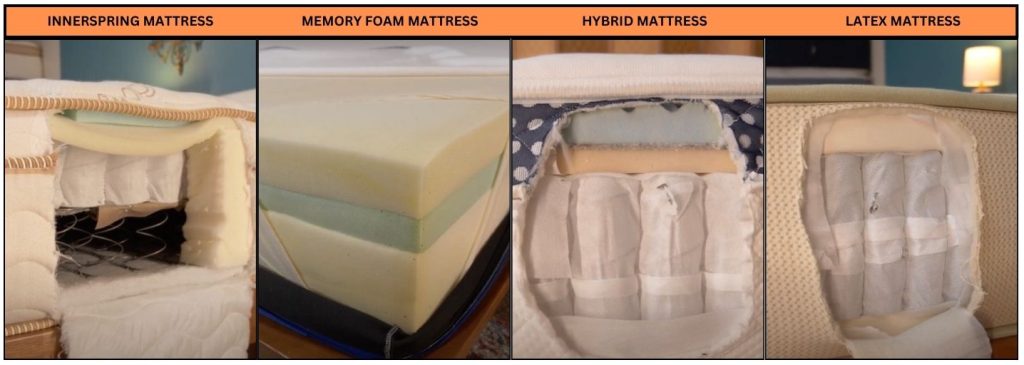
Innerspring Mattresses
Innerspring beds are made with a coil base and a thinner top layer of cushioning. The open structure of the coils allows for airflow, but that construction can also be a breeding ground for dust mites and other allergens. If allergies are a concern, consider avoiding innerspring mattresses.
Hybrid Mattresses
Hybrid beds combine materials that typically consist of coils and latex or memory foam — or both. Although the coils may attract allergens, memory foam and latex are hypoallergenic to help repel them.
Therefore, if you like classic innerspring beds, but want some allergy help from your mattress, a hybrid mattress could be a great compromise.
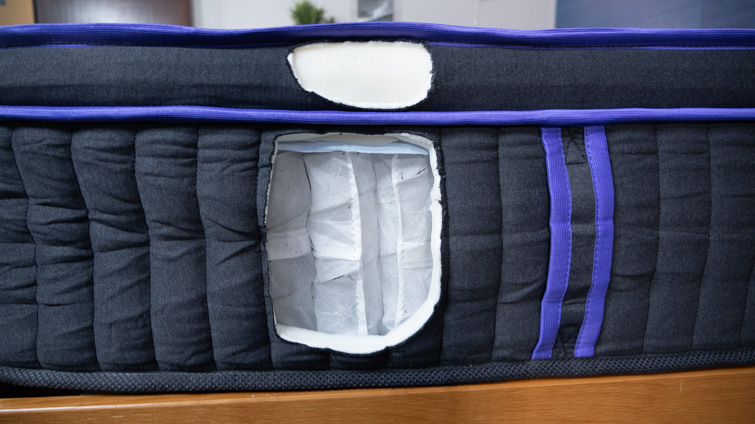
Memory Foam Mattresses
Memory foam is hypoallergenic, making it a good mattress choice for those with allergies. This material is not porous, and its density makes it harder for dust mites to inhabit.
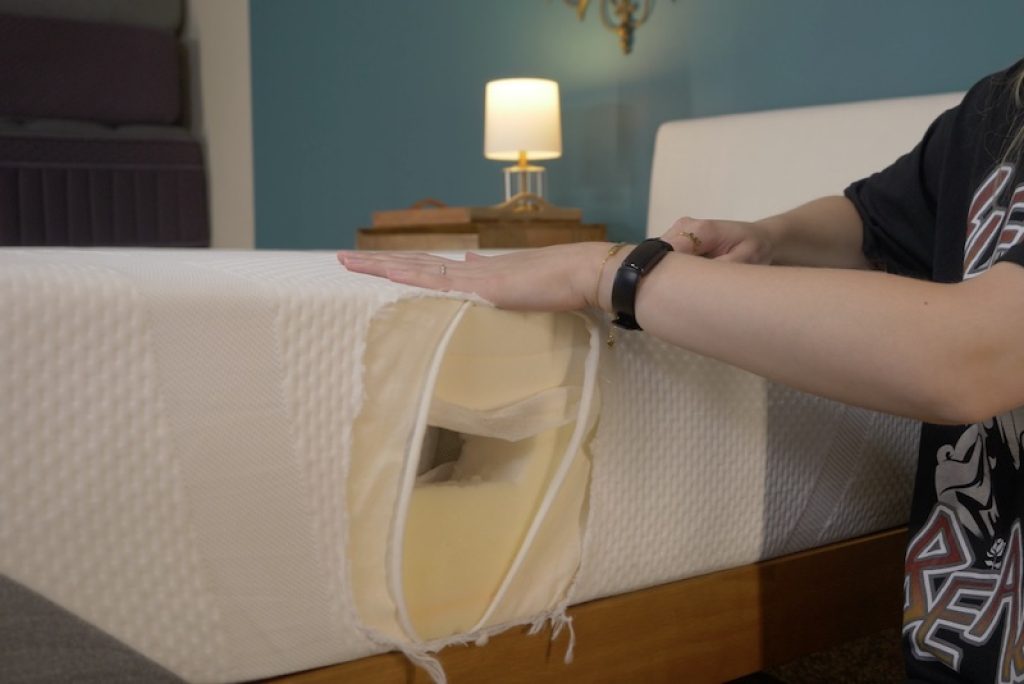
Latex Mattresses
Latex is an excellent material for those with allergies because its natural breathability helps it resist moisture to combat mold and mildew buildup. Talalay and Dunlop are two manufacturing styles for latex. Although both types are resistant to dust mites, Dunlop has a slight edge here because it’s denser.
Latex is resistant to dust mites and moisture, making it ideal for those with allergies. Plus, many latex beds are built with more organic and natural materials. The downside to latex is that it’s typically more costly. If a latex bed is out of your price range, we recommend a memory foam mattress since these beds are also hypoallergenic and often cheaper than latex models.
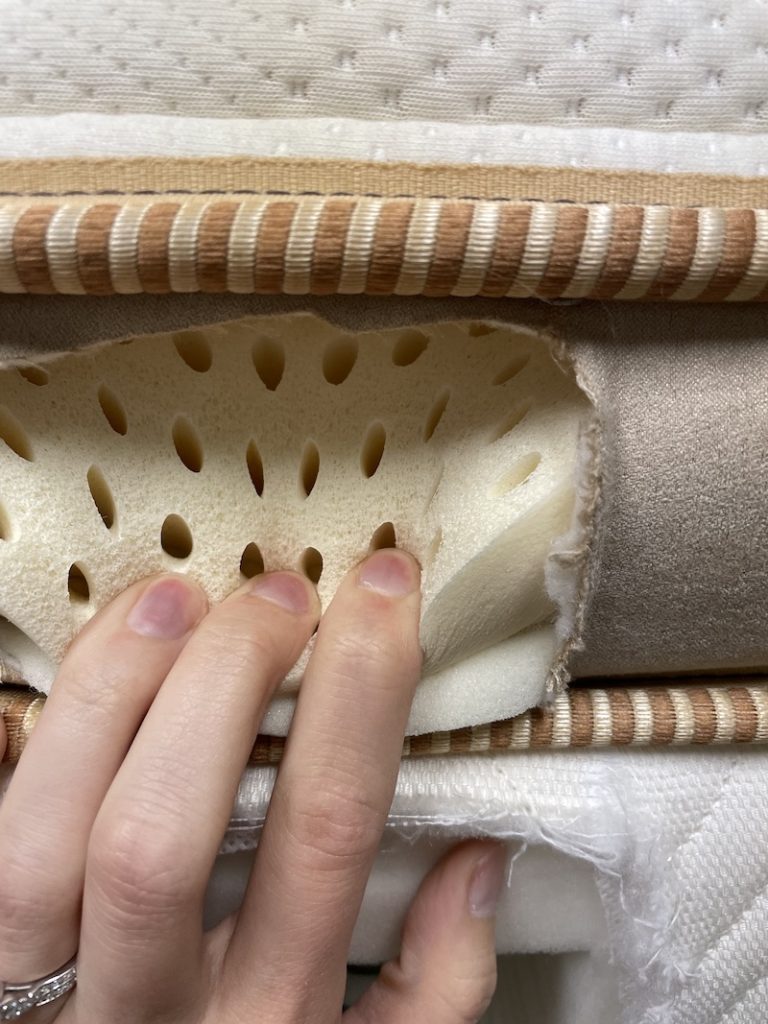
Other Considerations When Shopping for a Mattress for Allergies
Hypoallergenic
Hypoallergenic beds are made with materials that repel common allergens, such as dust mites and mold. Anti-allergenic materials like latex and memory foam are typically dense, which makes it difficult for allergens to inhabit your bed.
Antimicrobial
If your mattress states that it is antimicrobial, this means it is made with materials that prevent the growth of microorganisms such as mold, dust mites, fungi, and bacteria. Some beds may use an antimicrobial treatment to discourage the growth of allergens.
Dust Mite-Resistant
Dust mites4 are microscopic relatives of ticks and spiders that commonly live in house dust and thrive in warm, humid environments such as mattresses. Dust mite-resistant beds are made of dense materials such as latex and memory foam, which makes it difficult for these allergens to inhabit.
Learn More: Types of Mattress Materials
Weight/Body Type of Sleepers
Being overweight or obese5 increases your chances of developing allergies. If you fall into this category, finding a bed that helps prevent allergy symptoms may be especially important.
- Lightweight Sleepers (130 pounds or less) – My fellow lead product tester, Loren Bullock, represents sleepers on the lower end of the scale. She understands how softer beds offer lightweight sleepers a hug-like cradle that can help reduce pressure buildup.
- Average-Weight Sleepers (130 – 230 pounds) – I’m an average-weight tester, who, like many people, often enjoys a medium-firm bed. Beds with this firmness are versatile because they can strike a balance of support and pressure relief.
- Heavyweight Sleepers (230+ pounds) – If you have a larger build like our tester Spencer Bland, you’ll likely want a firm, extra-supportive mattress to help keep you lifted.
Firmness

Although a mattress’s firmness won’t have a direct bearing on allergy symptoms, it can help determine the quality of sleep that you get. How hard or soft you want your mattress to be is largely a matter of personal preference.
We rate firmness on a scale of 1-10, with 10 being hard as concrete. Most beds we review fall between a 5 and 7. Anything below this would be considerably soft, while anything above this we classify as firm.
Cooling
Hot and humid environments6 are breeding grounds for certain allergens like mold. Although there isn’t specific research on how cooling mattresses affect allergy symptoms, it isn’t a big jump to assume that the cooler the bed, the less likely microorganisms that thrive in warm spaces will be present.
We test a mattress’s cooling capabilities by evaluating our personal experience with it and taking the temperature several times. Before lying on the bed, we take the surface temperature with a temperature gun. Once that is recorded, we lie on the bed for five minutes and then take the bed’s temperature again. We then repeat this second step and check the difference between the three readings. A mattress that scores the highest on our cooling test will stay within 5 degrees Fahrenheit of the initial temperature and feel comfortable to the person testing it.
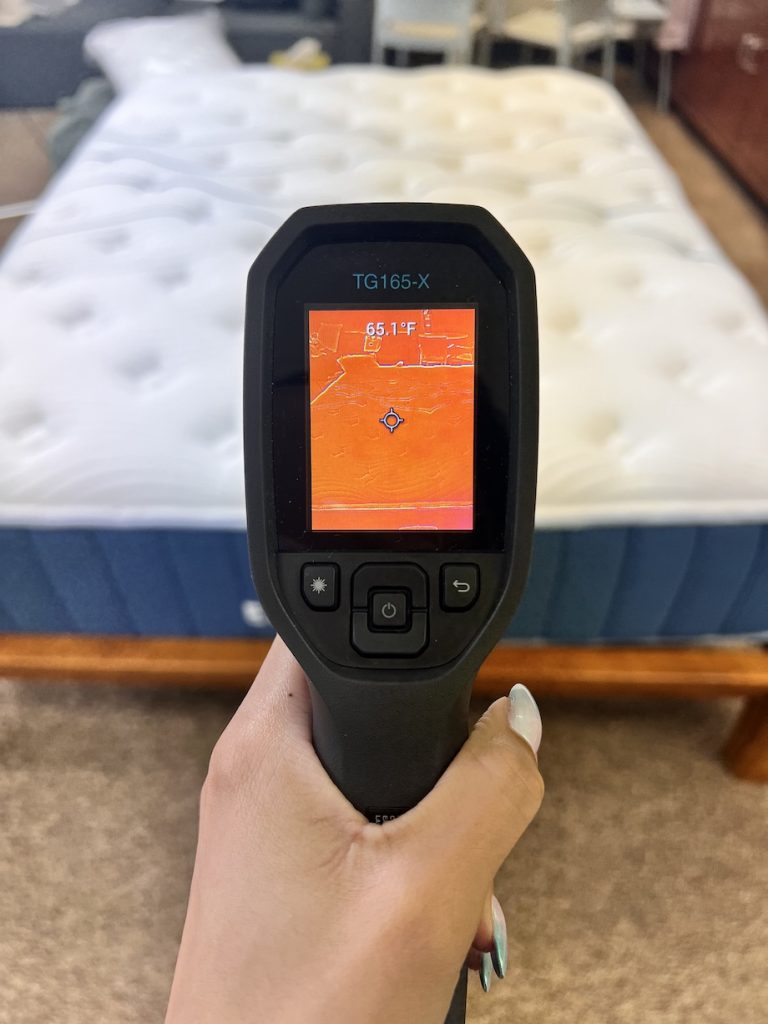
Motion Isolation
Beds with poor motion isolation allow your partner’s or pet’s movements to travel from one area of the bed to another. If you’re already dealing with allergy symptoms that disrupt your sleep, you don’t want a restless co-sleeper adding to this.
Loren and I evaluate a bed’s ability to absorb motion using a seismograph app that picks the amount of movement created when we move around on the mattress. If the app shows small waves, we know that the mattress did a good job of absorbing motion.
Memory foam is a hypoallergenic material, and it tends to absorb motion well.
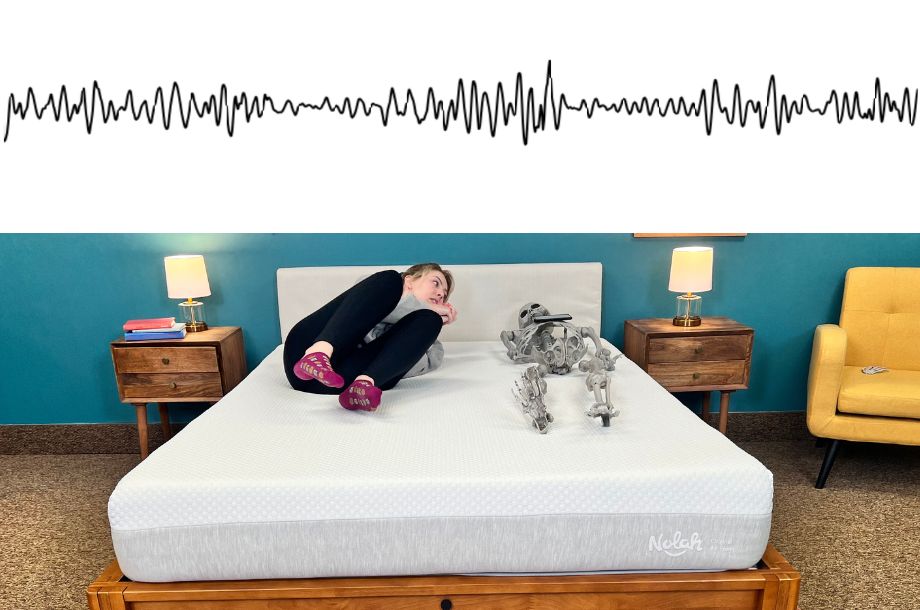
Sex
Beds that foster easy repositioning and movement through responsiveness and bounce can make sex more enjoyable for many couples. Fortunately, latex mattresses are an excellent choice for acts of intimacy and for combating allergens. Latex is an incredibly responsive material that quickly regains its original shape after pressure has been applied to it, allowing couples to move more easily.
Explore: Best Beds for Sex
Pressure Relief
Pressure relief may not directly impact allergies, but the good news is that our favorite materials for relieving pressure, memory foam and latex, are also adept at pressure relief.
To test for this, we place a pressure map on top of the mattress and then lie on our side and back. The pressure map can detect if there’s any pressure buildup. If the reading shows blue and green colors, we know there’s minimal pressure. However, if there’s a lot of red or yellow, that tells us the bed isn’t as good at pressure relief.
Explore our picks for the best mattresses for pressure relief
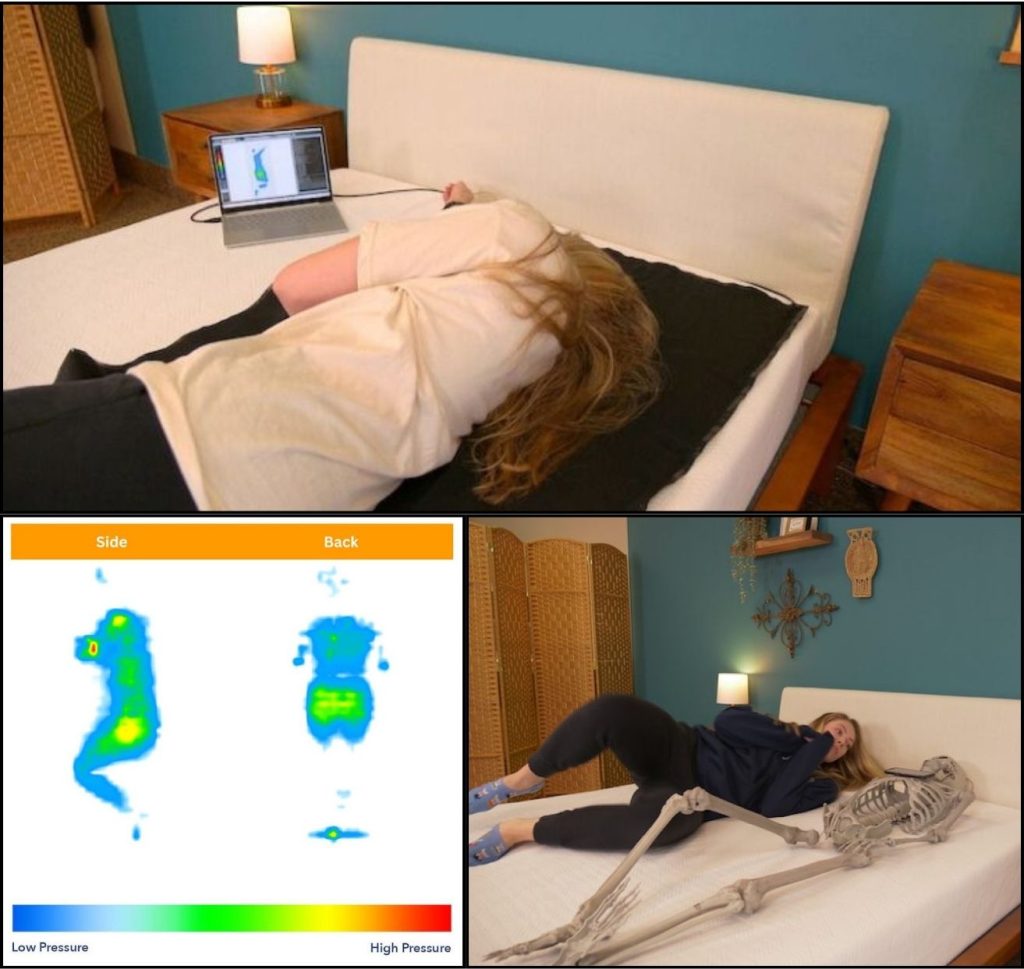
Edge Support
Edge support is an important feature for those who like to use the entire surface of the mattress for sleeping, as well as anyone who needs a sturdy perimeter for getting in and out of bed. Mattresses often provide this through reinforced foam or coils along the perimeter.
We test this by sitting on the outside of the bed and tying our shoes for a minute. Once that is complete, we lie on the edge of the bed for a minute. If we feel secure in both scenarios, the bed has great edge support.
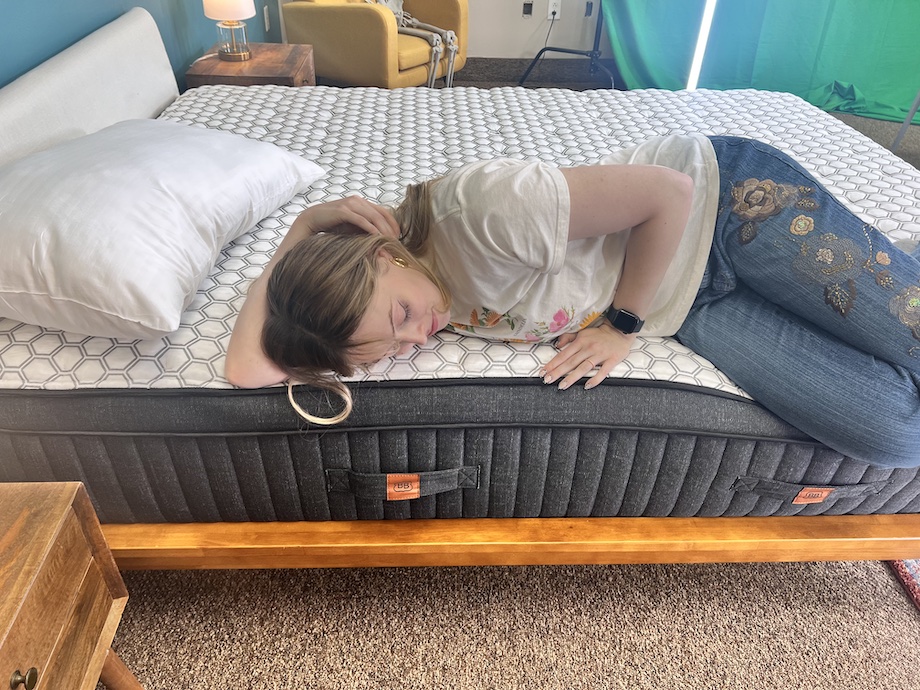
Budget
Those with allergies should look for hypoallergenic mattresses that are made with quality materials and third-party certified. This may mean a slightly higher price tag, but if it could help you sleep better, I’d say it’s a worthy investment.
Discover our best budget mattresses.
What Causes Allergies?
While grass, dust, and pollen are common causes of sneezing and wheezing, your mattress can trap a host of allergens that can irritate your airways and even affect your health long term.
Four main mattress culprits often cause allergies:
- Fecal matter from dust mites – This is a gross reality in many innerspring mattresses. Dust mites feed on the flakes of your skin and other organic matter, and they thrive in humid conditions. Their hard shells and feces can trigger asthma and allergy symptoms7.
- Chemical components – Mattresses are required to have flame retardant protection, but some companies may cut corners by using cheap, synthetic materials such as fiberglass. In this case, look for fiberglass-free mattresses that might help you sleep easier.
- Mold and mildew – If you live in a moisture-rich environment or are a sweaty sleeper, you could be exposed to copious amounts of mold and mildew, both of which may trigger allergies and asthma.
- Pet dander – We love our pets, but if you’re allergic, letting them sleep in bed with you could worsen the problem. The issue could intensify if your pets spend time outdoors and pick up all the other environmental allergens.
How Can a Mattress Help with Allergies?
Your mattress may be housing up to one million dust mites8. Fortunately, hypoallergenic beds, such as those made with latex and memory foam, can help stop allergens from thriving and moving. They do this by repelling dust mites before they can set up residence.
What Is the Best Sleeping Position for Allergies?
Lying down can worsen the congestion and sinus drainage that is often associated with allergies. Therefore, let’s take a look at how your preferred sleeping position can affect your allergy symptoms.
Back Sleeping
Back sleeping can be a good way to lessen your allergy symptoms9 since your face isn’t directly against your pillow or sheets, but you will want to prop yourself up by stacking standard pillows, using a wedge pillow, or accessing an adjustable base. Lying upright could help you breathe more easily and keep mucus from pooling in the back of your throat.
To ensure a mattress is good for back sleepers, we see how well it does at keeping our hips lifted and pressure away from our shoulders.
Side Sleeping
Sleeping on your side can help keep your airways more open10 for easier breathing. We also recommend investing in a good pillow for side sleeping to ensure your head and neck are in a healthy alignment. Additionally, there are many hypoallergenic pillows available, such as the Coop Eden Pillow, which is one of our best pillows of 2024, to help you keep allergens at bay.
We consider a mattress good for side sleepers if we feel adequate pressure relief in our shoulder and hip while lying on our side during testing.
Combination Sleeping
Back-and-side combination sleepers may find added breathing relief by keeping their head propped up11. However, you should avoid this if you sometimes sleep on your stomach since it could cause neck strain. Plus, stomach sleeping puts your face more in contact with the bed, which might be bad news if your mattress and/or bedding isn’t hypoallergenic.
We consider beds good for combo sleepers if they are more bouncy and easy to move around on when we test them.
Stomach Sleeping
When you have an onset of allergies, you may want to avoid stomach sleeping if possible. If you must sleep on your stomach, though, it’s best to get a hypoallergenic mattress, as well as hypoallergenic sheets and pillows.
When we test for stomach sleeping, we are looking at how well our hips are lifted. If we feel supported, it should work well for these sleepers.
Expert Tips to Alleviate Allergies

- Get a HEPA Filter – A high-efficiency particulate air (HEPA12) filter traps allergens, such as pollen, pet dander, smoke, and dust mites, to prevent them from circulating around the room and into your respiratory system.
- Monitor humidity – If you live in a dry climate, consider a humidifier, but make sure to clean it regularly to prevent mold and mildew growth. Conversely, if you sleep in a room with too much moisture, a dehumidifier may combat mold and make the air easier to breathe. Get More Info: Best Humidifier for Asthma
- Don’t allow pets in the bedroom – You may not be allergic to your pet, but their fur can trap many allergens. Therefore, it is best to keep them out of the bedroom, especially during allergy season. Looking for more info? Check out our complete guide to sleeping with pets.
- Keep your mattress clean – Vacuum your mattress to help remove dust mite feces, and dead skin cells. Change your pillowcase and sheets frequently (once a week for sheets, and several times a week for pillowcases). Read our step-by-step guide on how to clean your mattress.
- Use aromatherapy – Some essential oils, like peppermint and eucalyptus, contain anti-inflammatory properties13 that may help with nasal congestion. Interested in exploring further? Follow our guide to the best essential oils for sleep.
What Type of Bedding is Best for Allergies?
Using sheets, blankets, or comforters made from hypoallergenic materials such as organic cotton, bamboo, wool, and silk can reduce your exposure to dust mites. Furthermore, sheets with a higher thread count make it harder for dust mites to collect because these sheets are more tightly woven. Bedding that can be washed in hot water is also a solid choice since the heat can help kill allergens.
Mattress Accessories That Can Help Allergies
- Hypoallergenic Mattress Toppers – Mattress toppers are a great, inexpensive way to change the feel of your bed, and ones made with hypoallergenic materials, such as latex and memory foam, can be an excellent way to fend off dust mites.
- Hypoallergenic Pillows – Since our heads remain in contact with our pillows for the majority of the night, it is a good idea to invest in a latex or memory foam pillow to curb allergens. This can be particularly important for side and stomach sleepers. Wedge pillows can be a good choice for back sleepers as they can keep your head propped up to help drain your nasal passages and keep your airways more open.
- Mattress Protectors – Mattress protectors are used as a line of defense against stains, dirt, and allergens. These bedding accessories fit over the top of the mattress and are a great way to keep allergens from reaching your airways.
Compare Prices of the Best Hypoallergenic Mattresses
| Mattress | Best For | Price (Queen Size) | Review |
| Nectar | Editor’s Pick | $999 | Nectar Mattress Review |
| Nolah Natural | Organic | $1,199 | Nolah Natural Mattress Review |
| DreamCloud | Back Pain | $1,332 | DreamCloud Mattress Review |
| Saatva Latex Hybrid | Natural Latex | $2,195 | Saatva Latex Hybrid Review |
| Helix Midnight | Hybrid | $1,199 | Helix Midnight Mattress Review |
| WinkBeds EcoCloud | Combination Sleepers | $1,999 | WinkBeds EcoCloud Mattress Review |
| Bear Elite Hybrid | Athletes | $2,305 | Bear Elite Hybrid Mattress Review |
| Brooklyn Bedding EcoSleep | Affordable | $1,327 | Brooklyn Bedding EcoSleep Review |
| Birch Natural | Stomach Sleepers | $1,799 | Birch Natural Mattress Review |
Hypoallergenic Mattresses FAQs
What bedding materials are the most asthma-friendly?
Natural materials tend to be best for asthma since chemicals may trigger or worsen asthma. Materials that work well include:
Bamboo: naturally resists dust mites, mold, and mildew
Silk: has the same properties as bamboo but feels softer
Cotton: resists moisture buildup and breathes well
Wool: wicks away moisture and resists dust mites
Check Out Our Full Comparison: Bamboo vs. Cotton Sheets
Are latex beds good for allergies?
Latex mattresses can have significant advantages for people with allergies because the material is naturally resistant to dust mites, bacteria, and mold — all things that can stir up a reaction.
Can latex mattresses trigger an allergic reaction?
It’s possible, but people with latex allergies can typically sleep on latex beds without issues. According to research, most folks with latex allergies14 experience minor skin irritations from direct contact, so you should be fine with a bed that’s wrapped in flame retardant “sock” and an outer cover.
If your reaction to this material is severe, synthetic latex may be a safer bet. Either way, you should seek your doctor’s opinion before purchasing a latex mattress.
Are hypoallergenic mattresses worth it?
If you experience allergy symptoms that disrupt your sleep, a hypoallergenic mattress is worth it. Many hypoallergenic beds are also made with top-quality materials like latex and memory foam that offer fantastic comfort.
Is a foam or spring mattress better for allergies?
A foam mattress is better for allergies than one made with springs. The open structure of innerspring mattresses can often be a breeding ground for dust mites. Conversely, many foam beds are hypoallergenic. Furthermore, foam’s density helps prevent microorganisms from setting up in your bed.

Julia Forbes
Sleep Advisor Mattress Tester
About Author
Julia is a product tester at Sleep Advisor, specializing in testing out mattresses and sleep accessories – she’s in the right line of work, because she loves to sleep.
Stomach Sleeper
Education & Credentials
- Certified Sleep Science Coach
References:
- “What OEKO-TEX® Labels Mean and Why They Matter”. OKEO-TEX.com. 2024.
- “Foams that feel good and you can feel good about ®”. Certipur.us. Webpage accessed April 29, 2024.
- “CERTIFICATION”. Global-standard.org. Webpage accessed April 29, 2024.
- “Dust mite allergy”. The Mayo Clinic. Last modified July 31, 2021.
- Morąg, Bartłomiej., Kozubek, Patrycja., Gomułka, Krzysztof. “Obesity and Selected Allergic and Immunological Diseases—Etiopathogenesis, Course and Management”. Nutrients. 2023.
- “Allergy-proof your home.” Mayo Clinic. Last modified December 22, 2022.
- “Overview: Dust mite allergies”. InformedHealth.org. Last modified August 17, 2023.
- “Understanding Dust Mite Allergies”. Stanford Healthcare. Webpage access October 26, 2023.
- Wang, Yun-Ting., et al. “Nasal Patency in Sitting, Supine, and Prone Positions in Individuals with and without Allergic Rhinitis”. Life. 2023.
- “Choosing the Best Sleep Position”. Johns Hopkins Medicine. Webpage accessed October 25, 2023.
- Iannella, Giannicola., et al. “Head-Of-Bed Elevation (HOBE) for Improving Positional Obstructive Sleep Apnea (POSA): An Experimental Study”. Journal of Clinical Medicine. 2022.
- “What is a HEPA filter?”. United States Environmental Protection Agency. Last modified March 5, 2024.
- Zuo, Xu., et al. “A Systematic Review of the Anti-Inflammatory and Immunomodulatory Properties of 16 Essential Oils of Herbs”. Evidence-Based Complementary and Alternative Medicine. 2020.
- “Latex Allergy”. Better Health Channel. Webpage accessed Jun 8, 2023.

